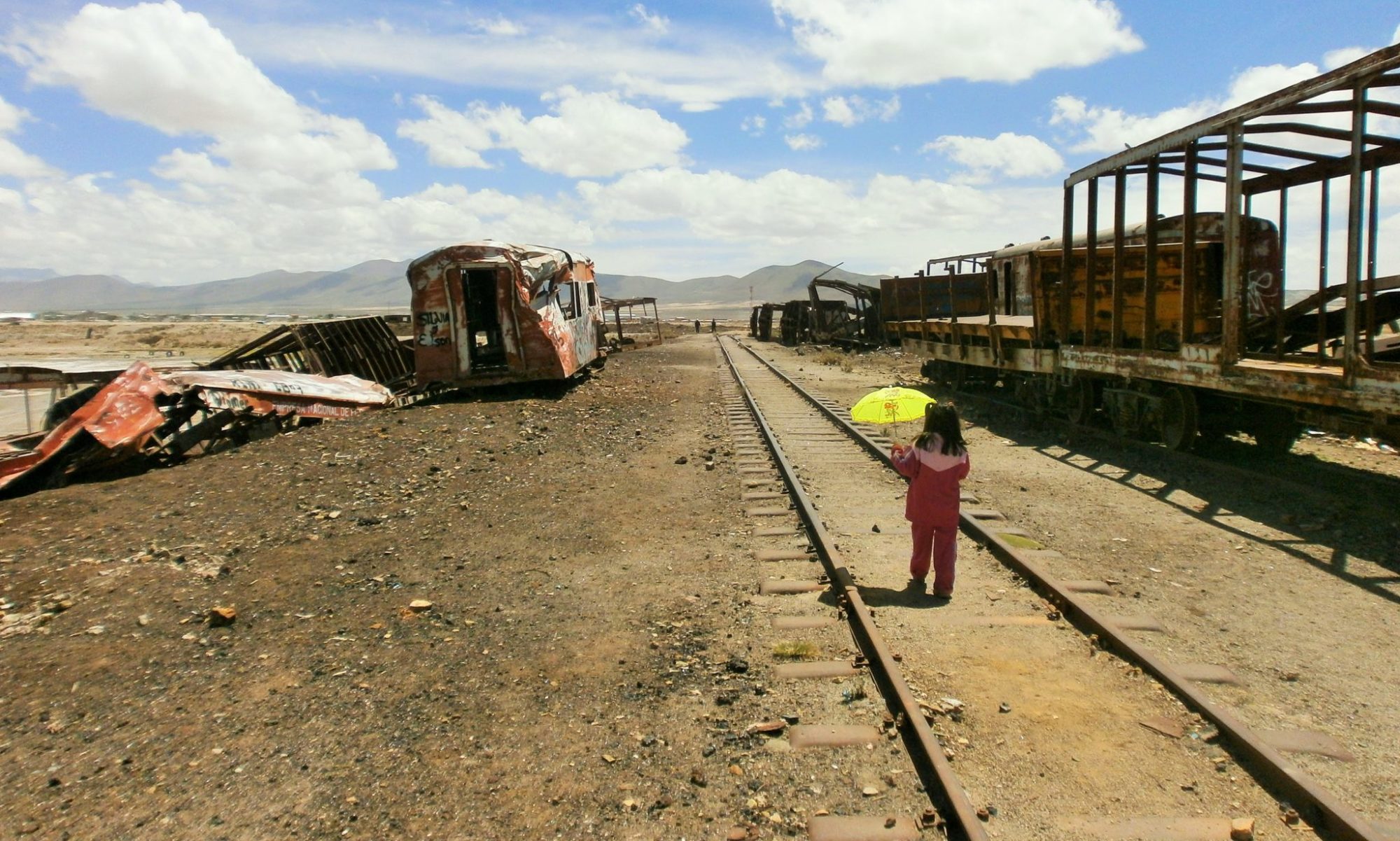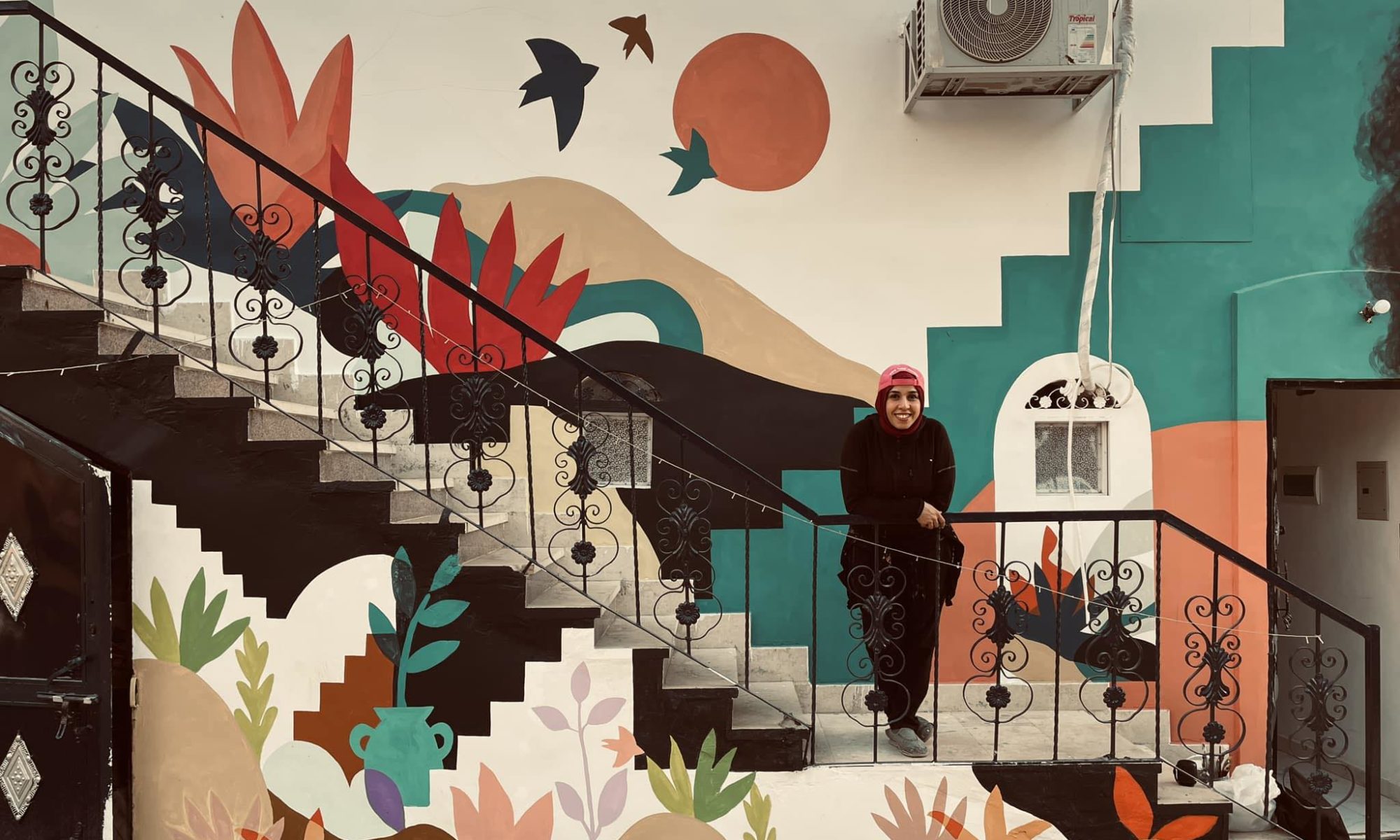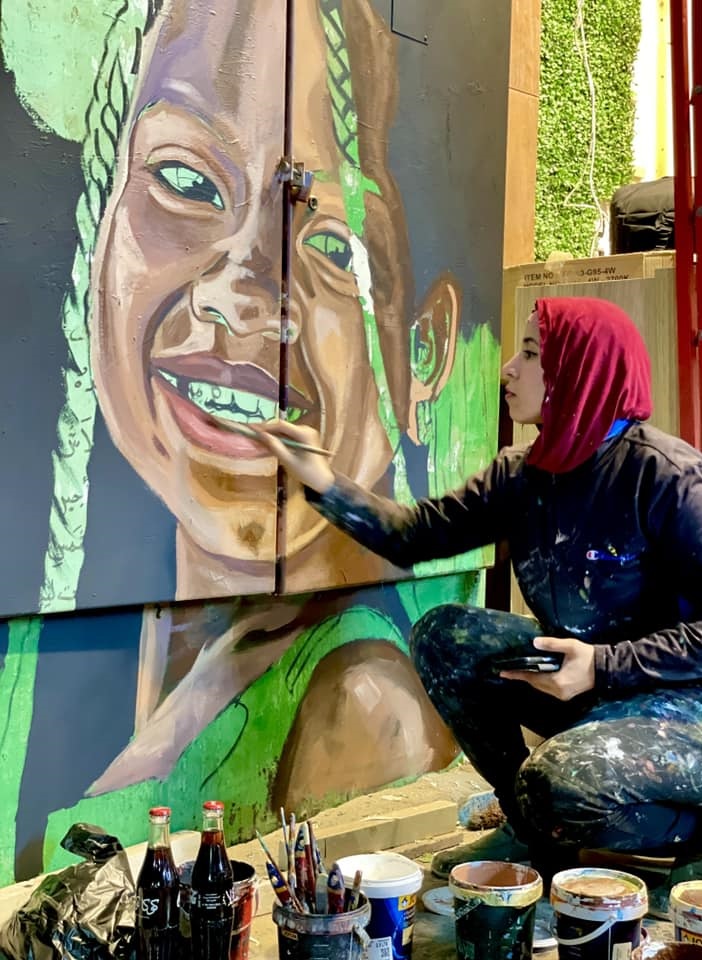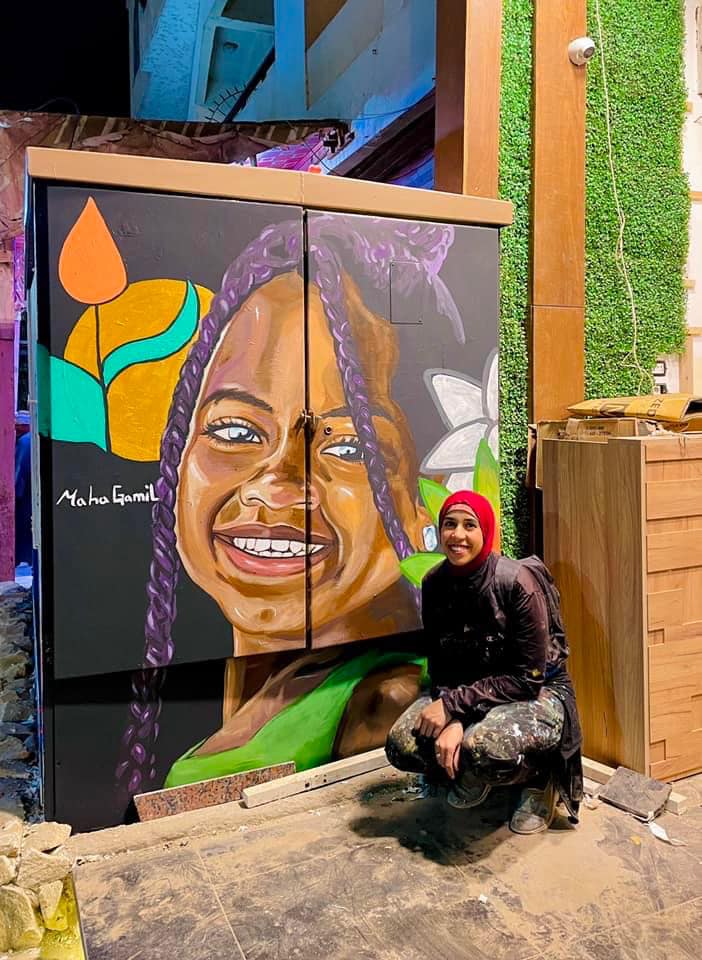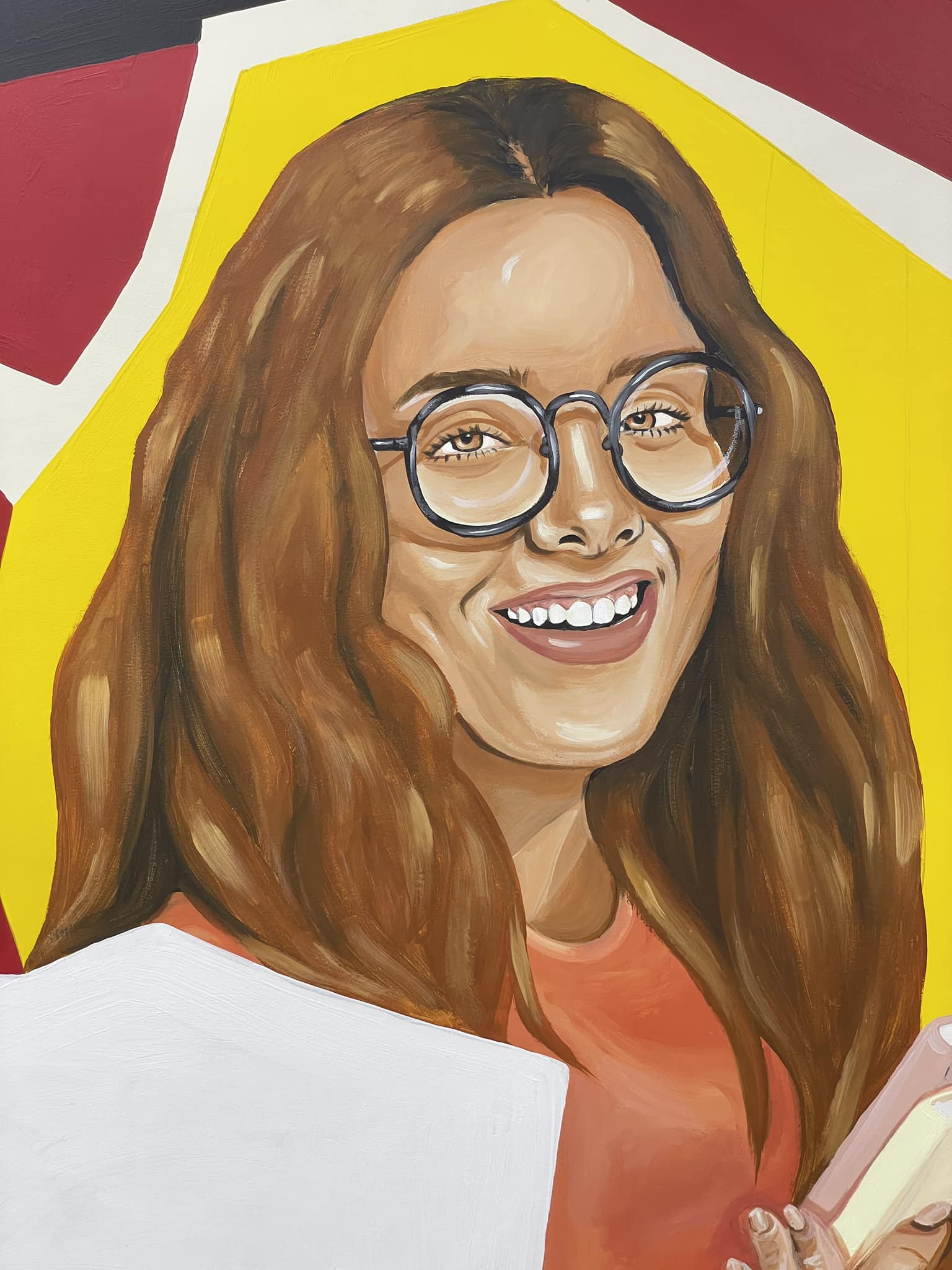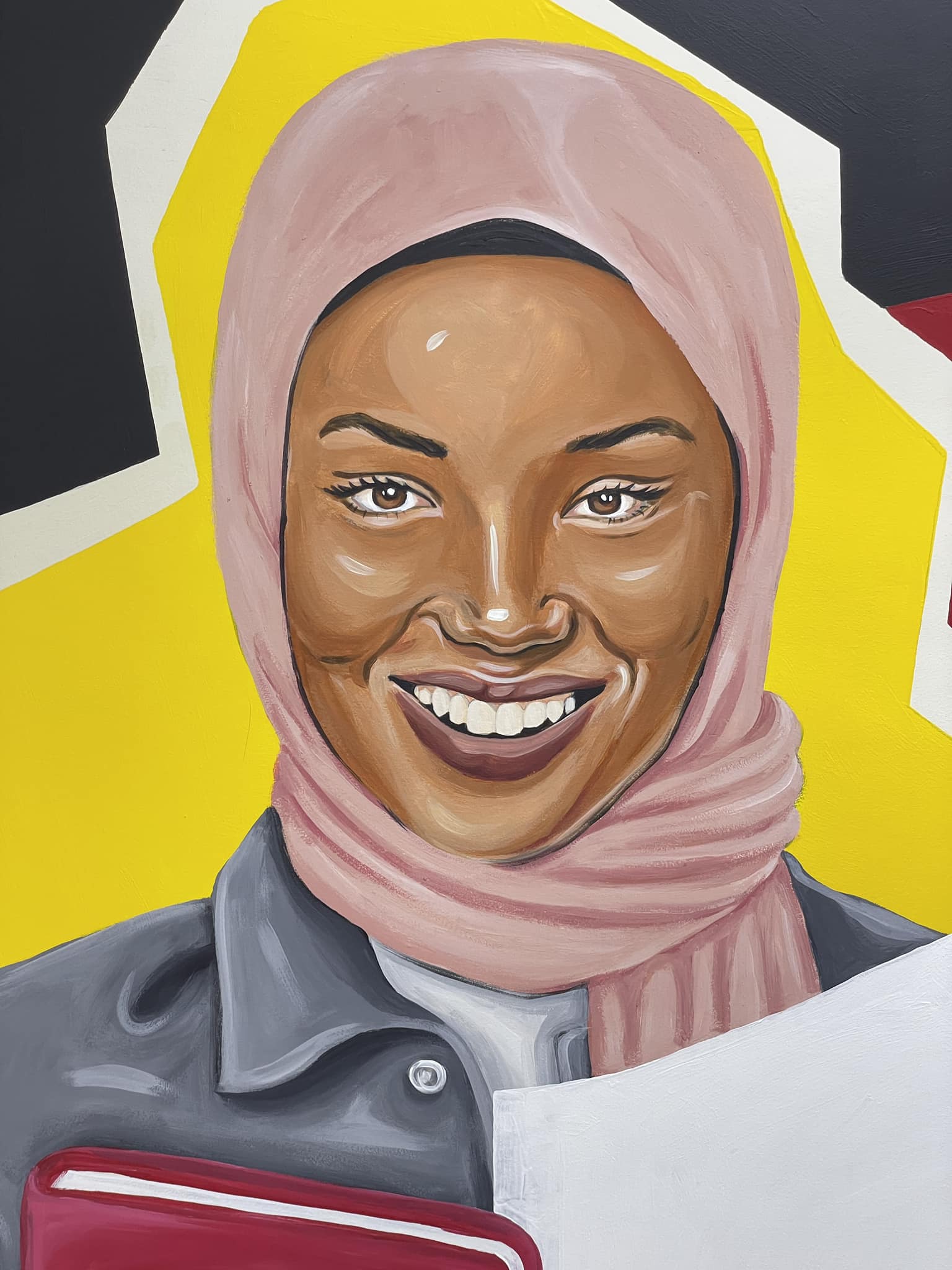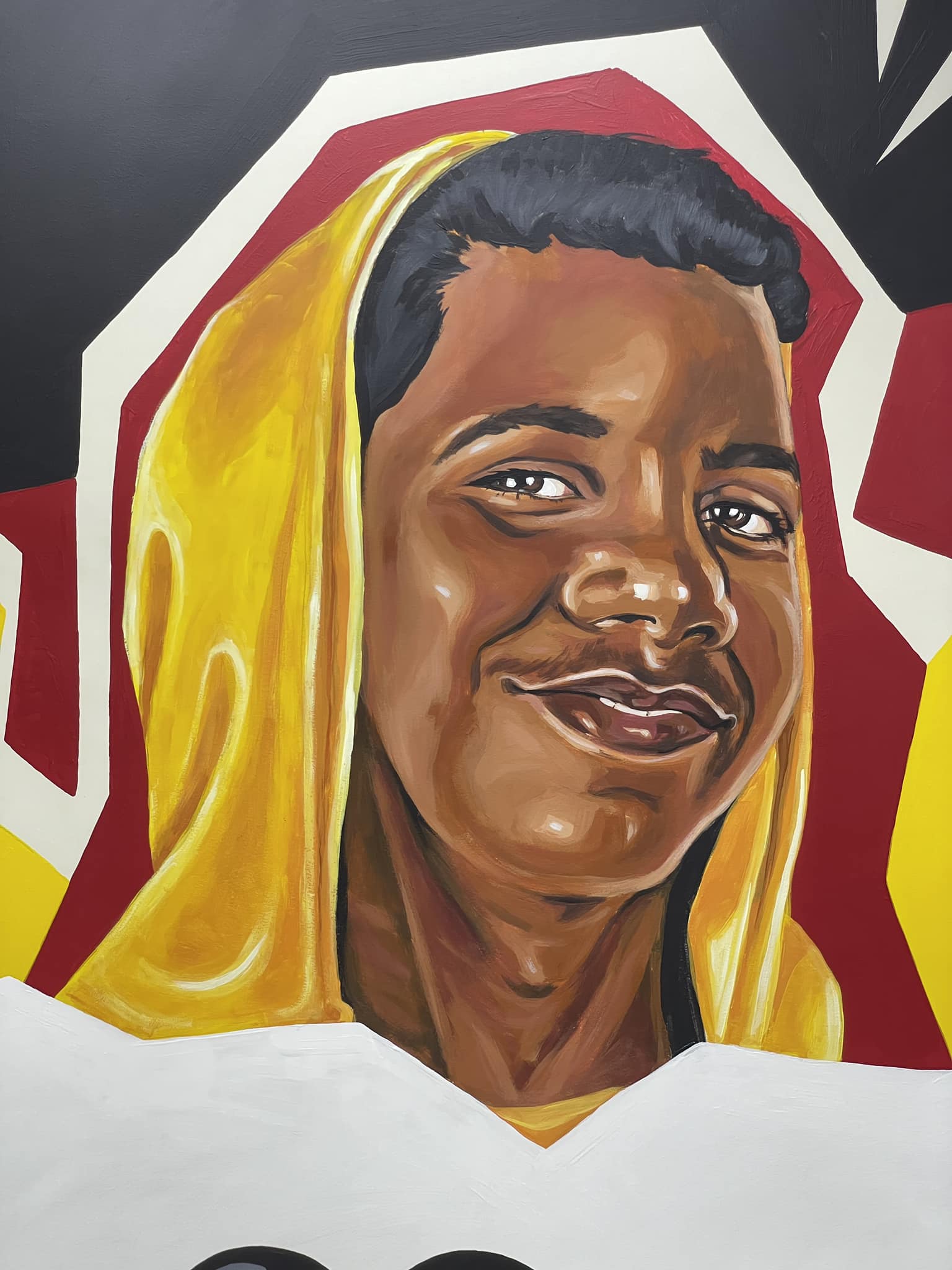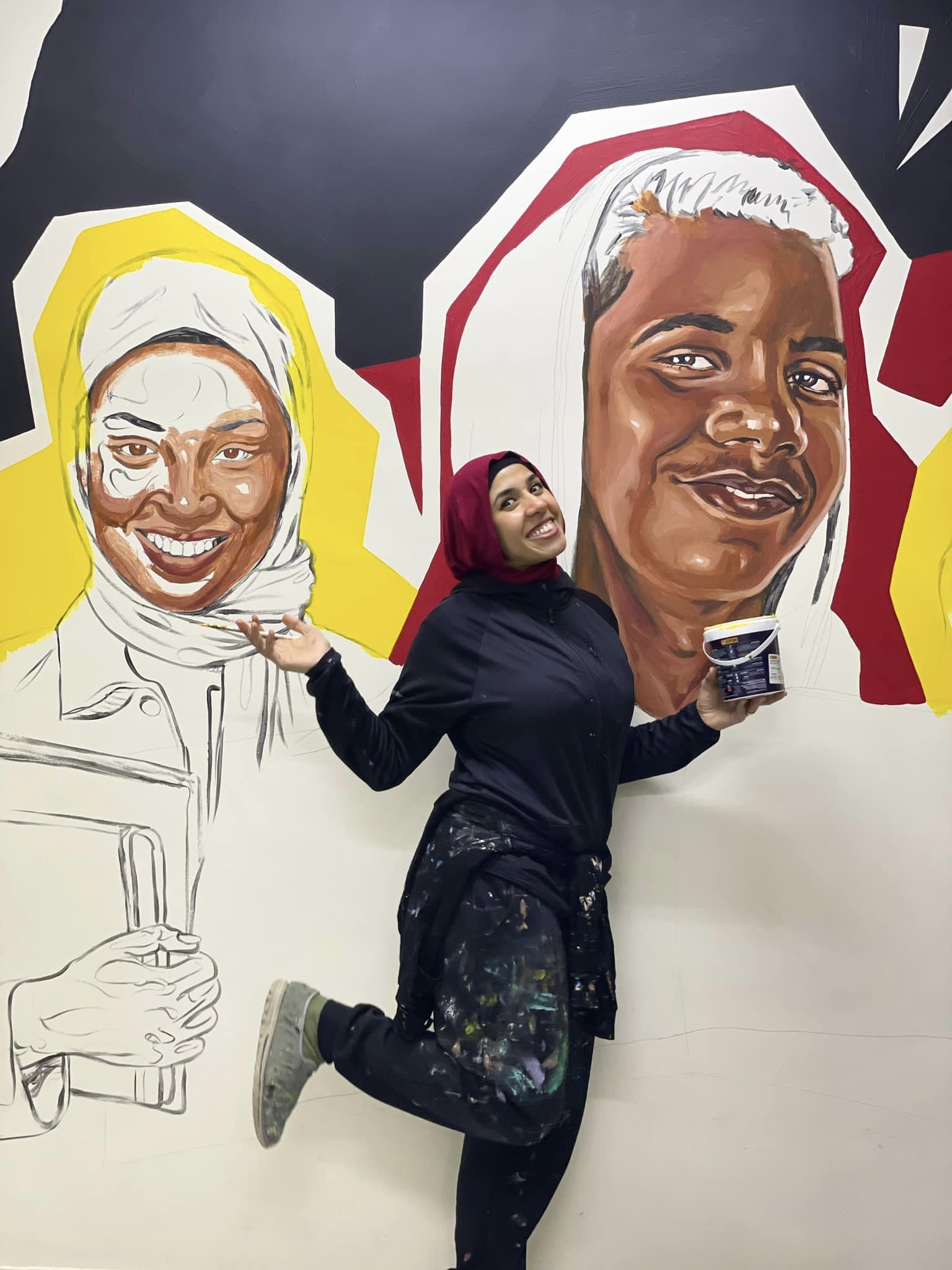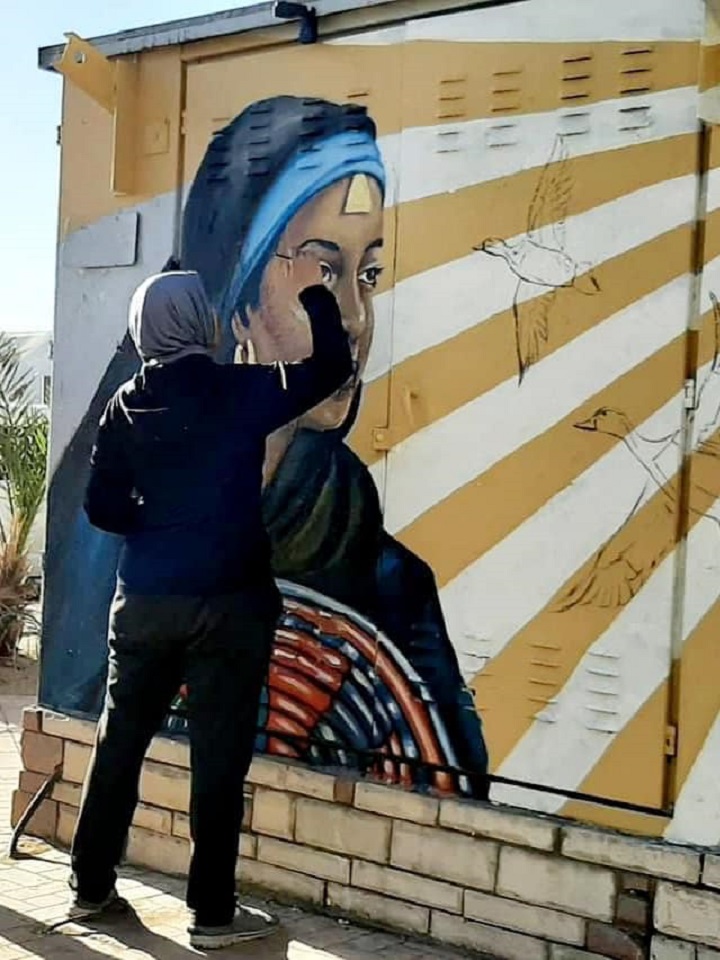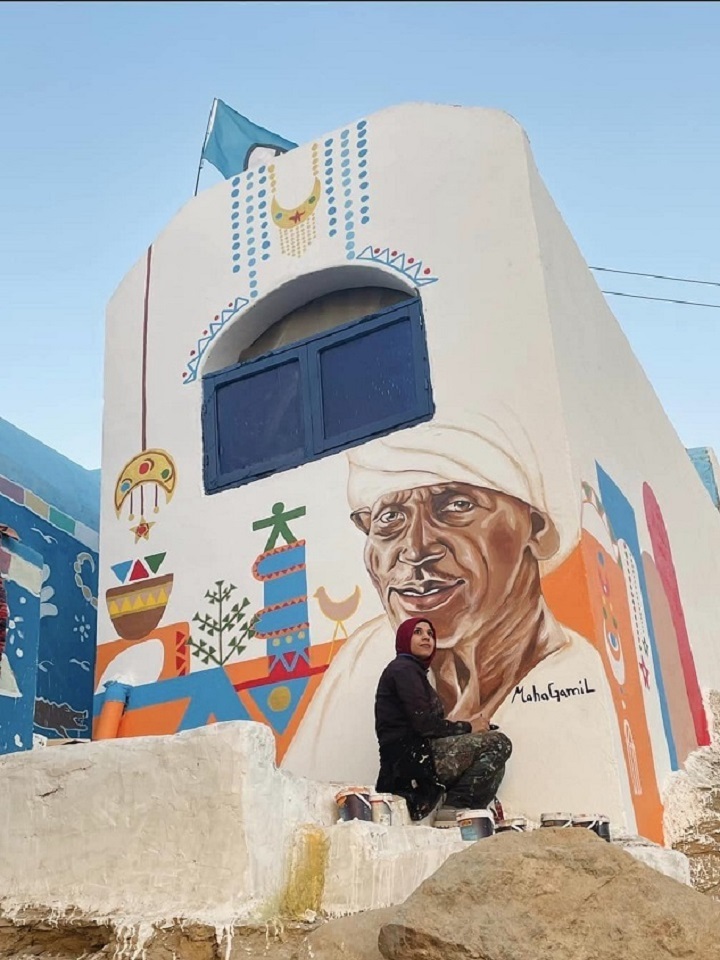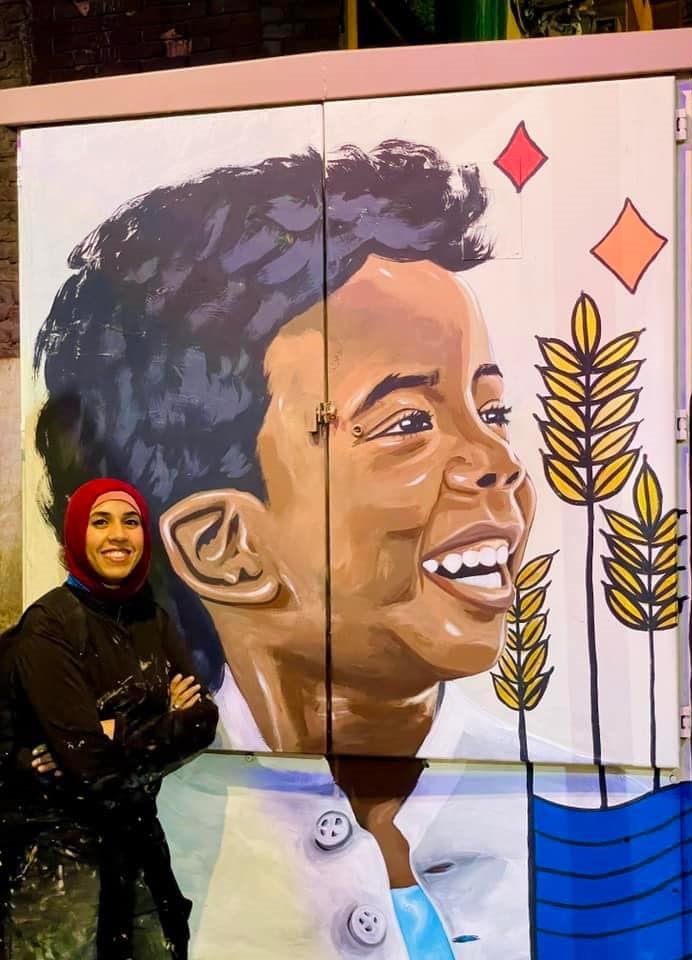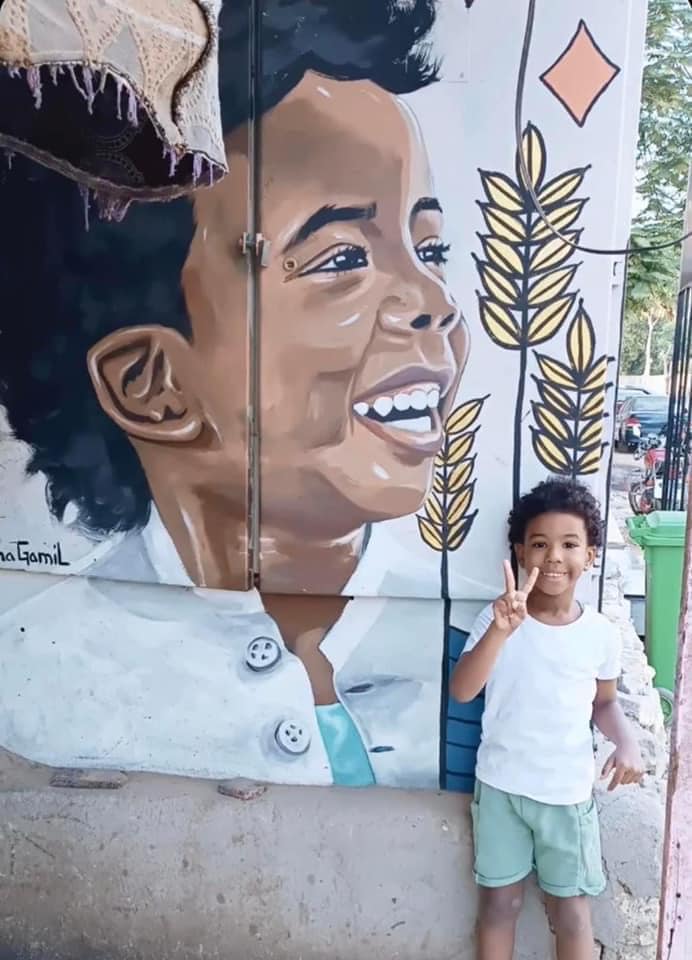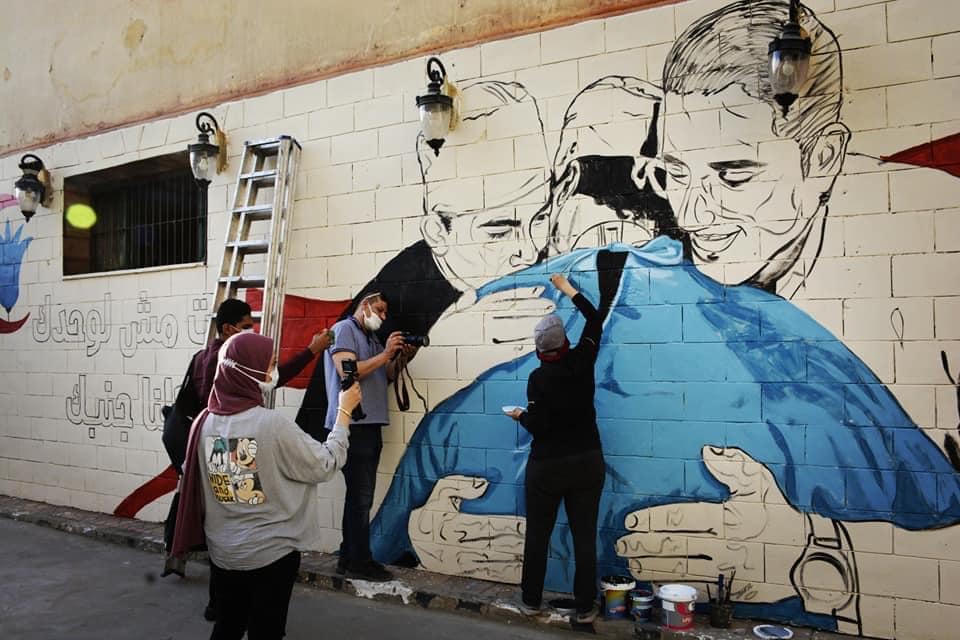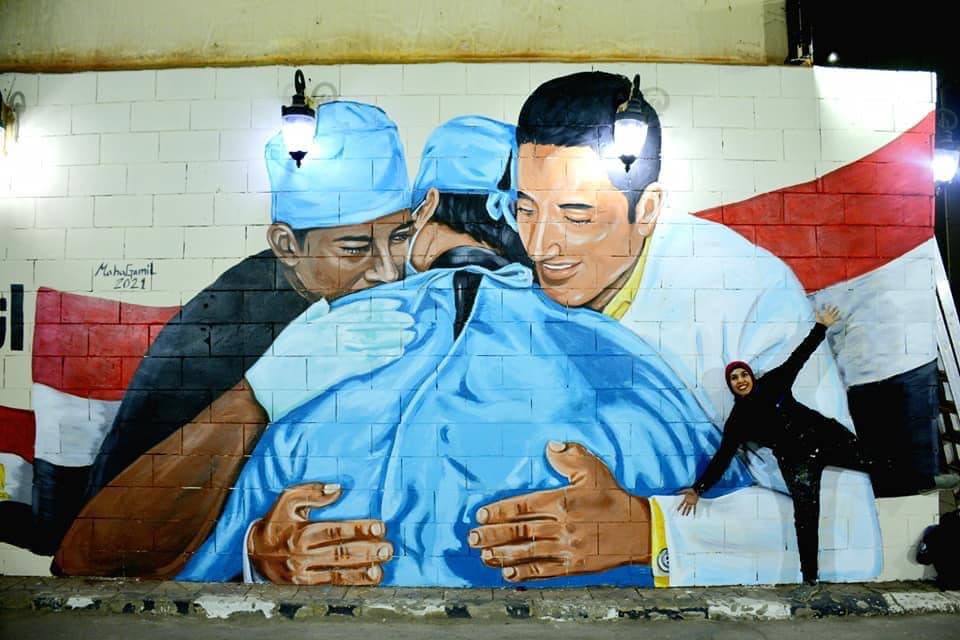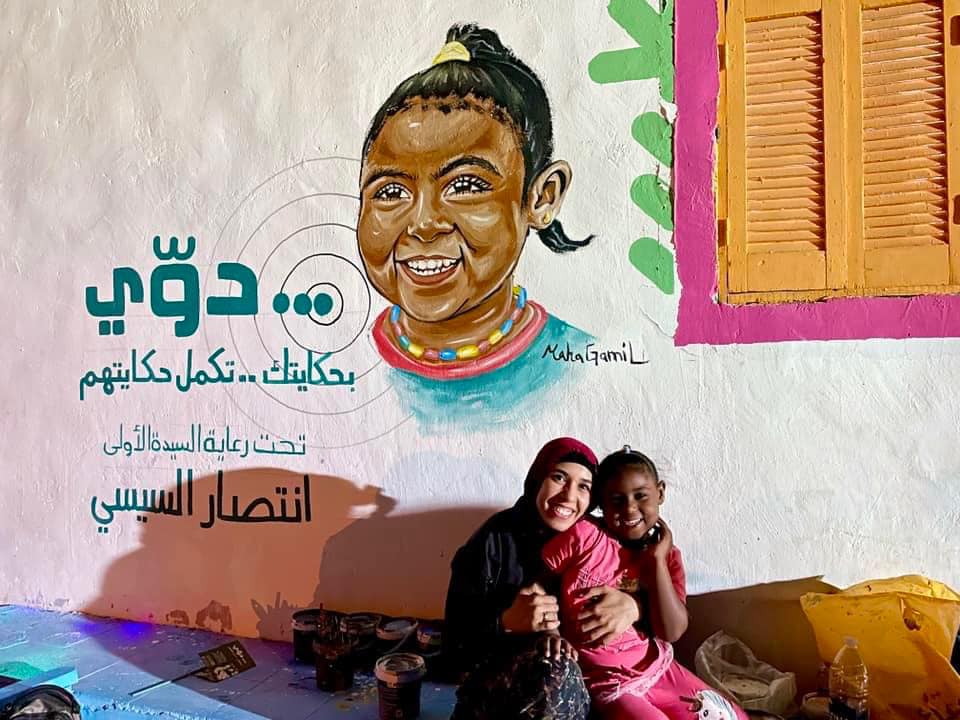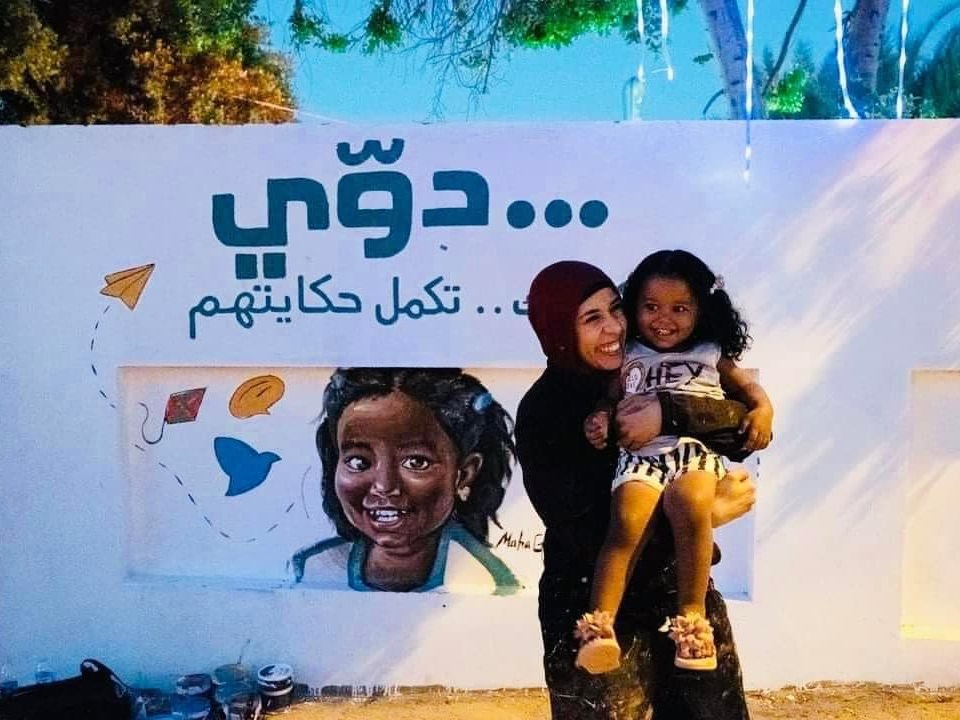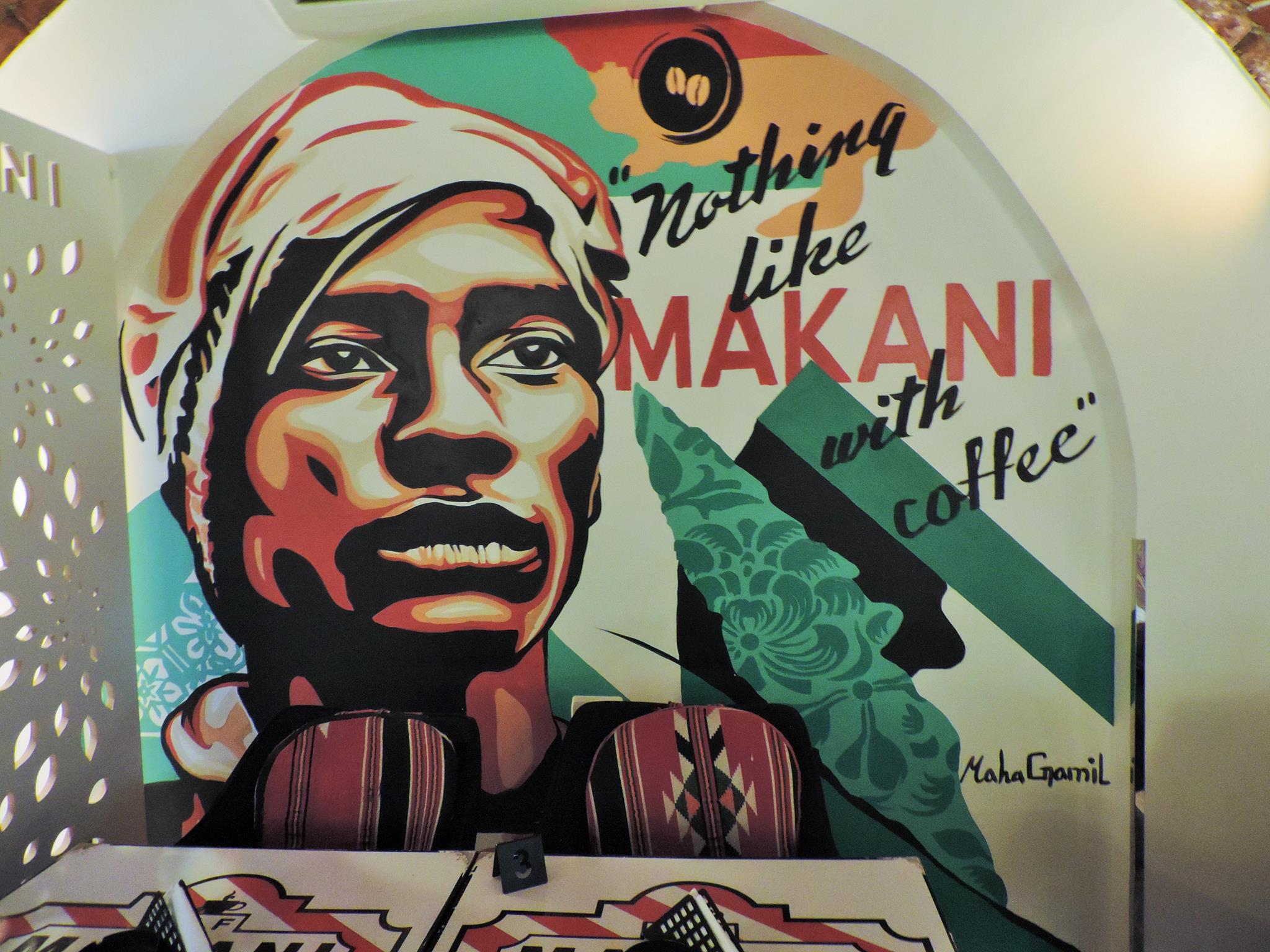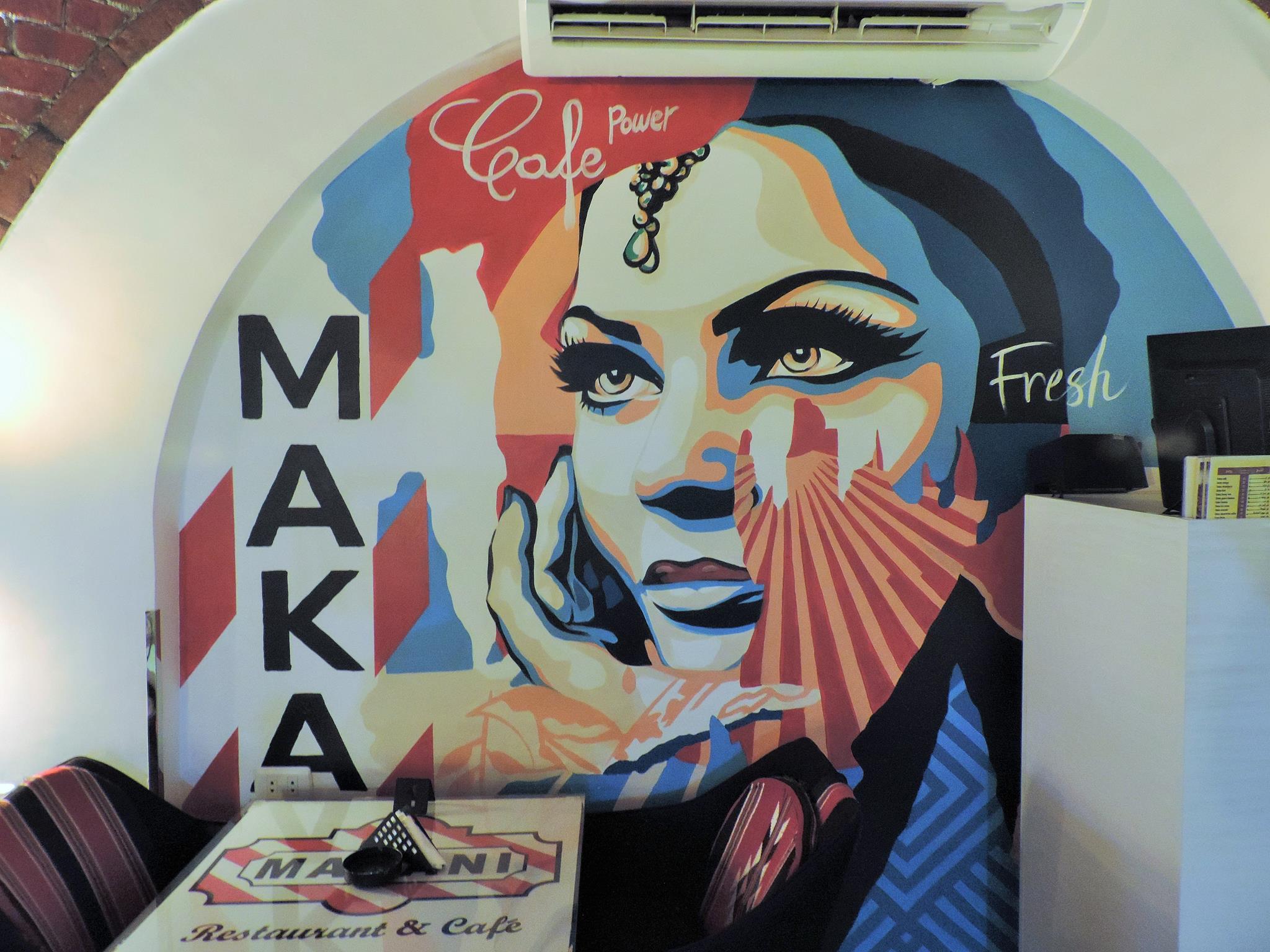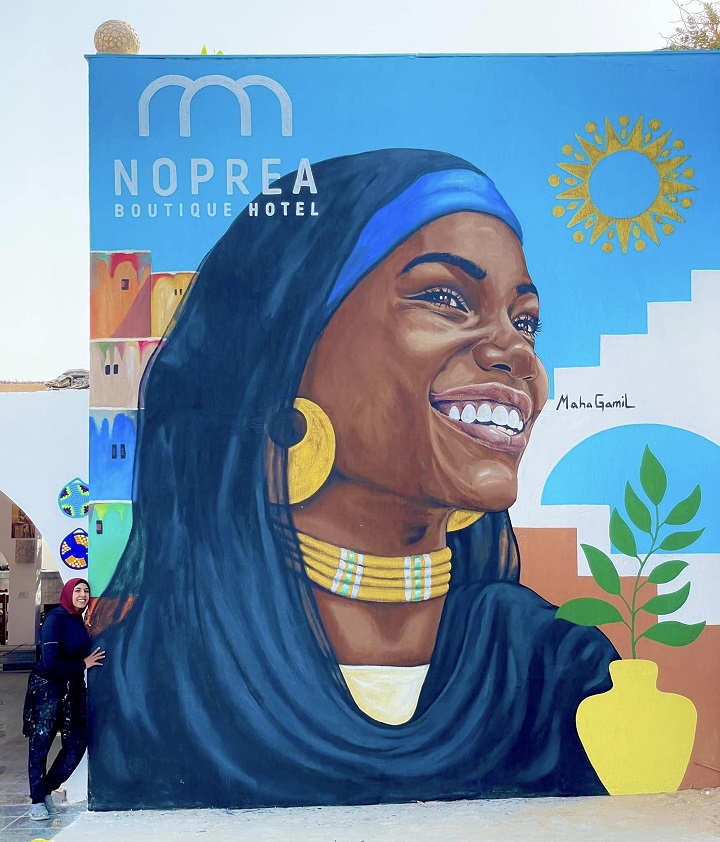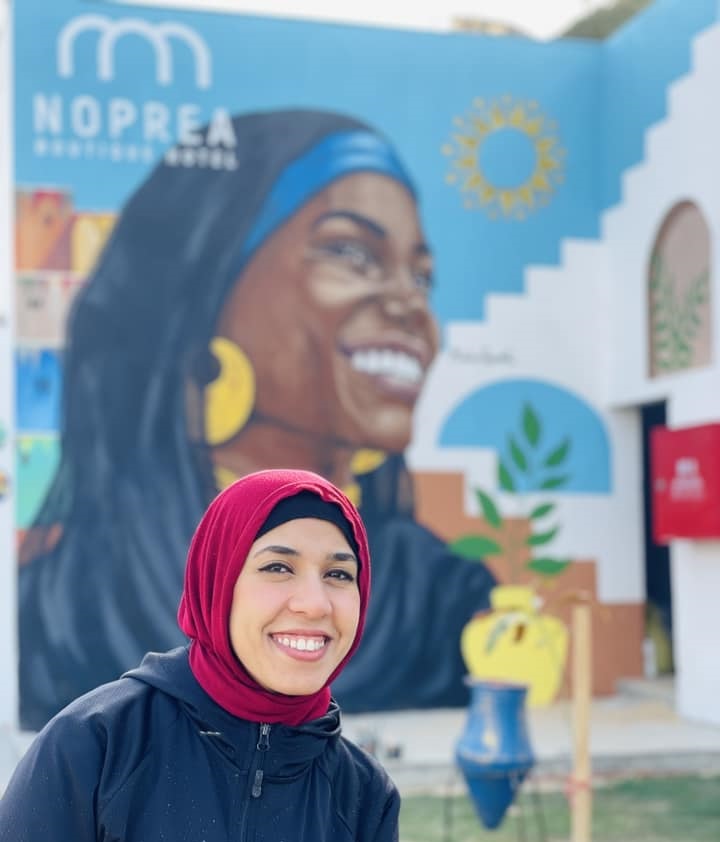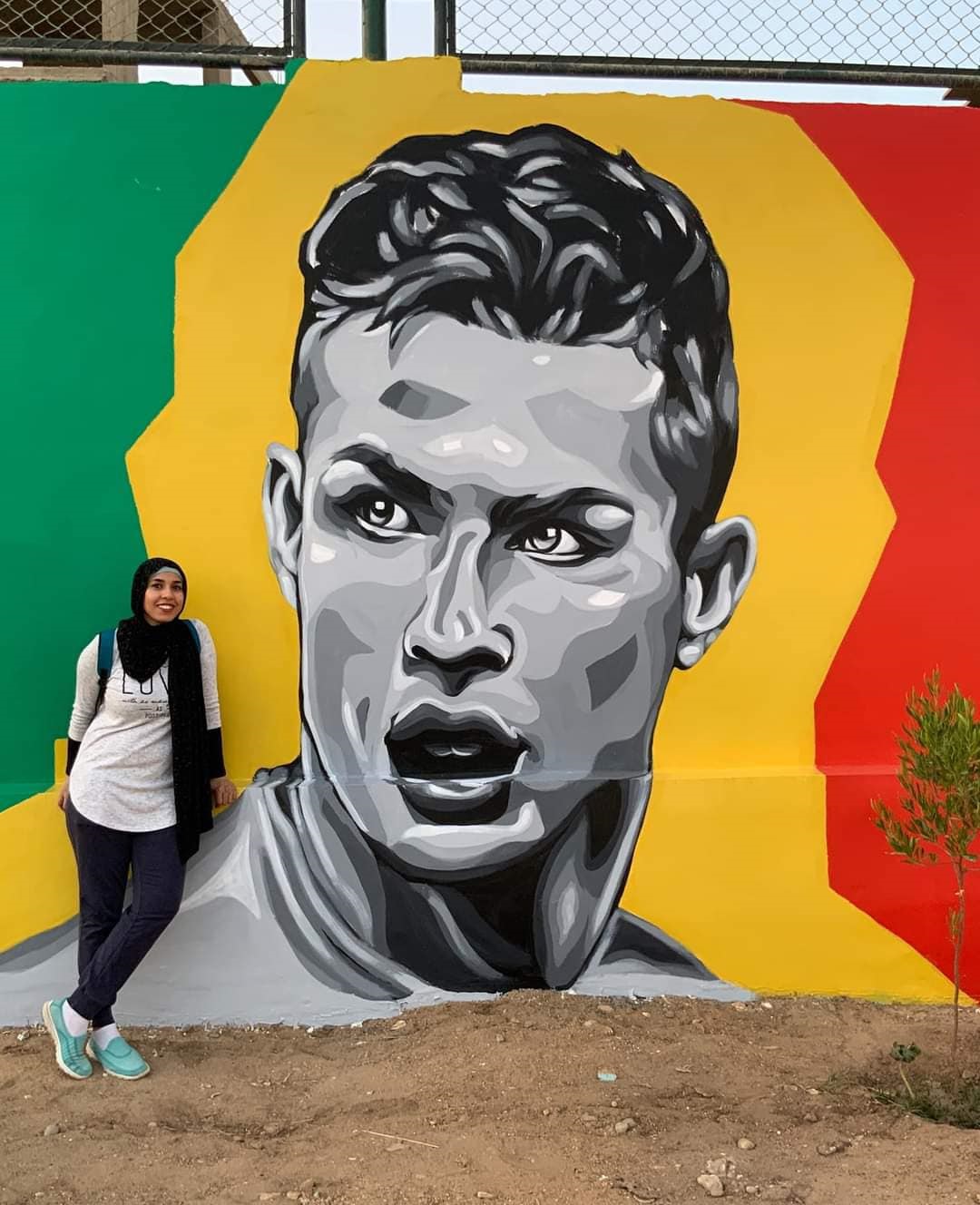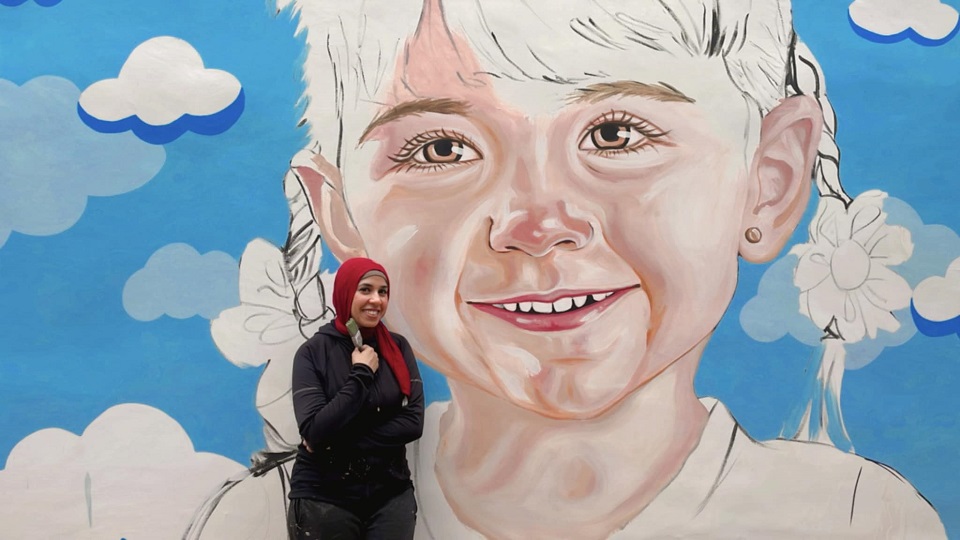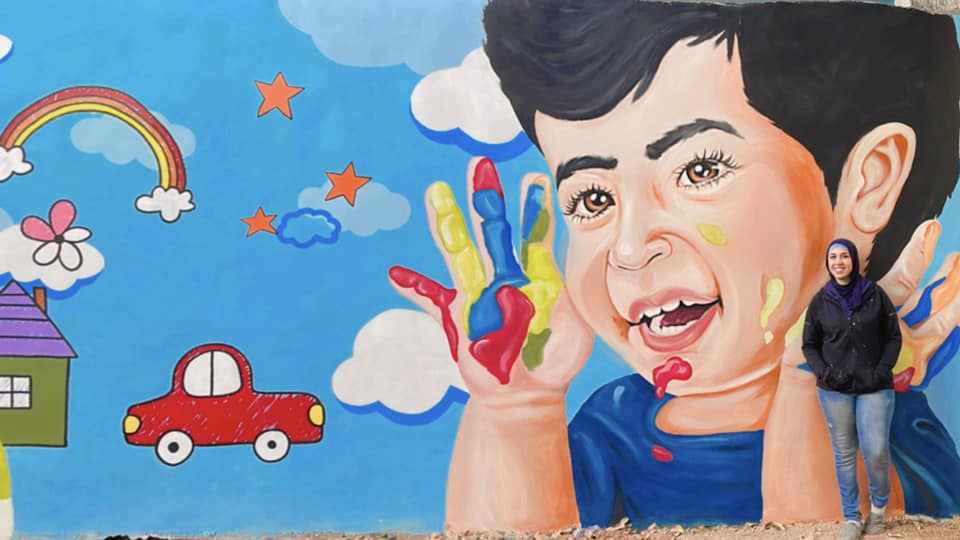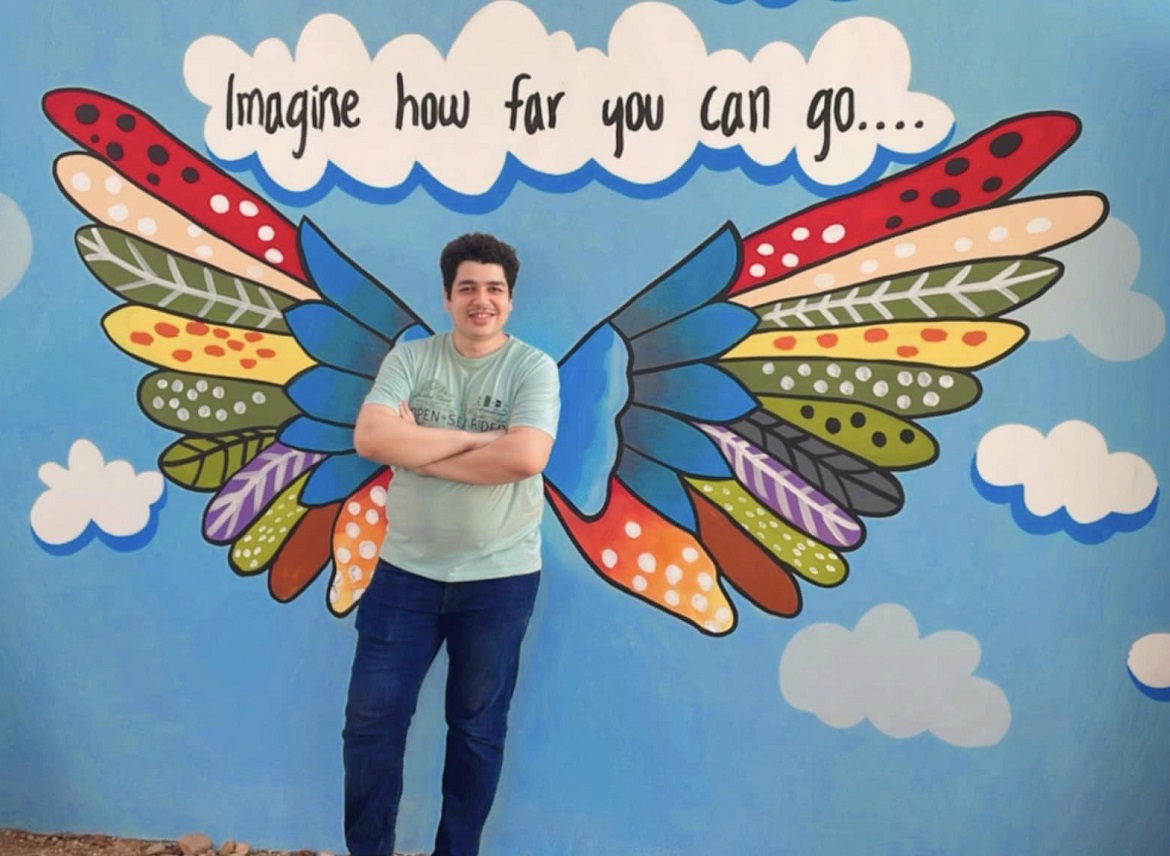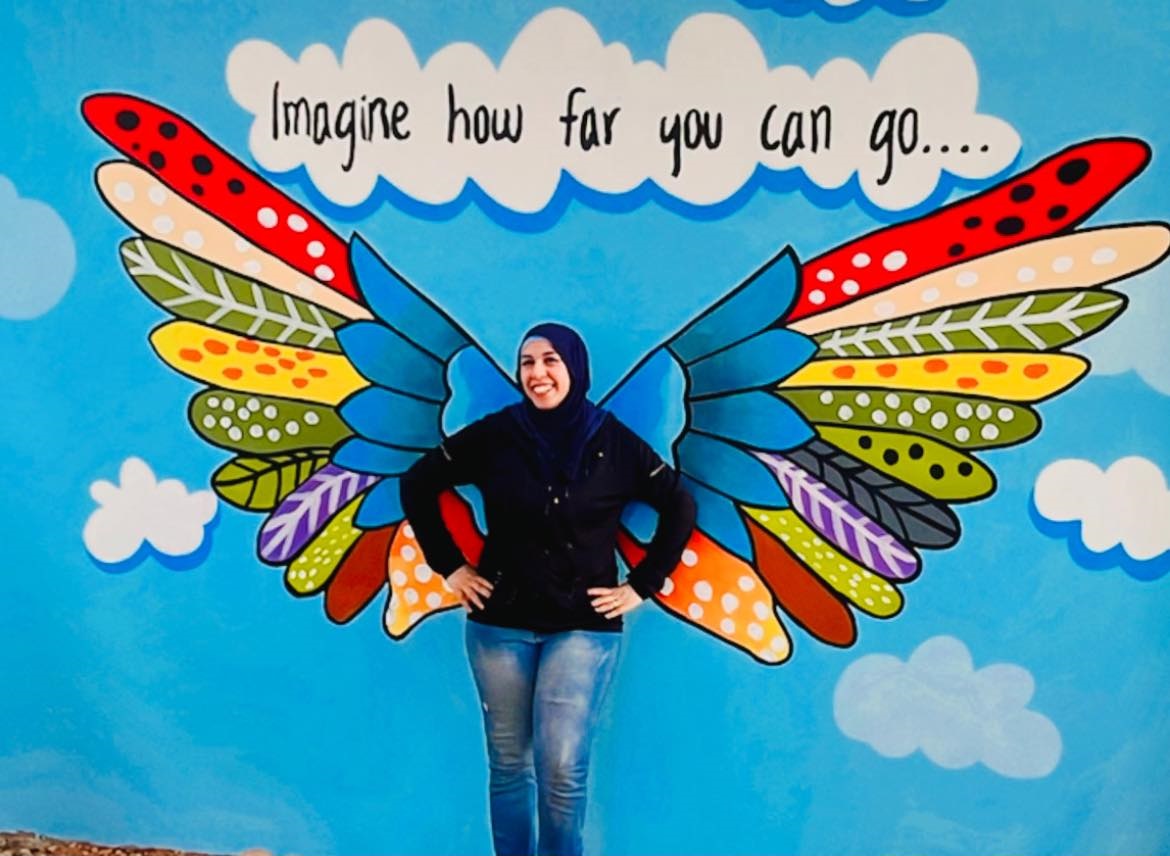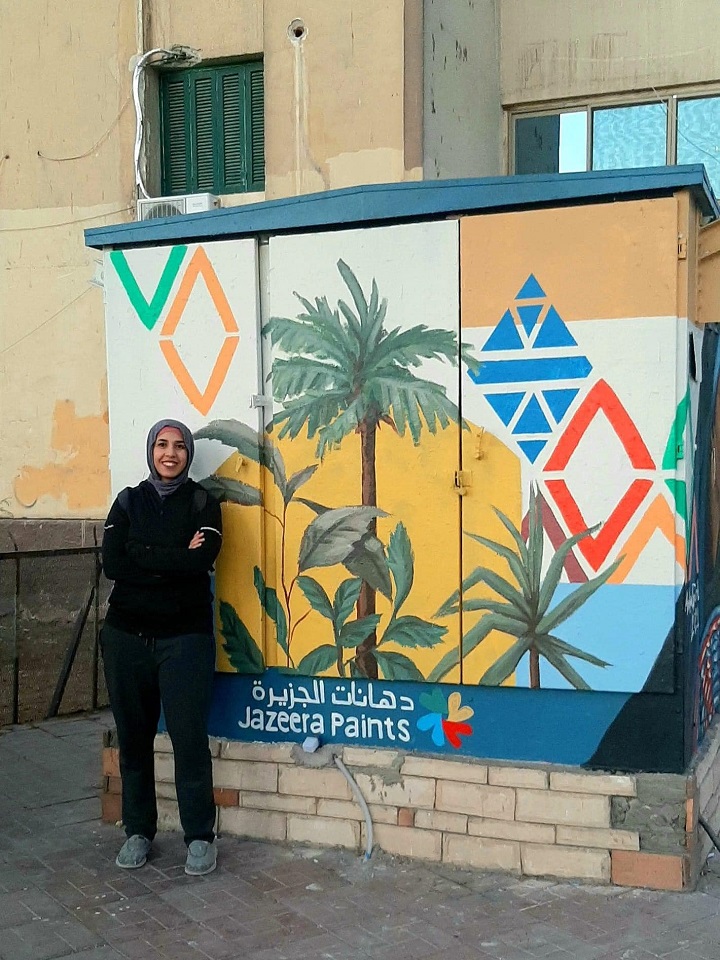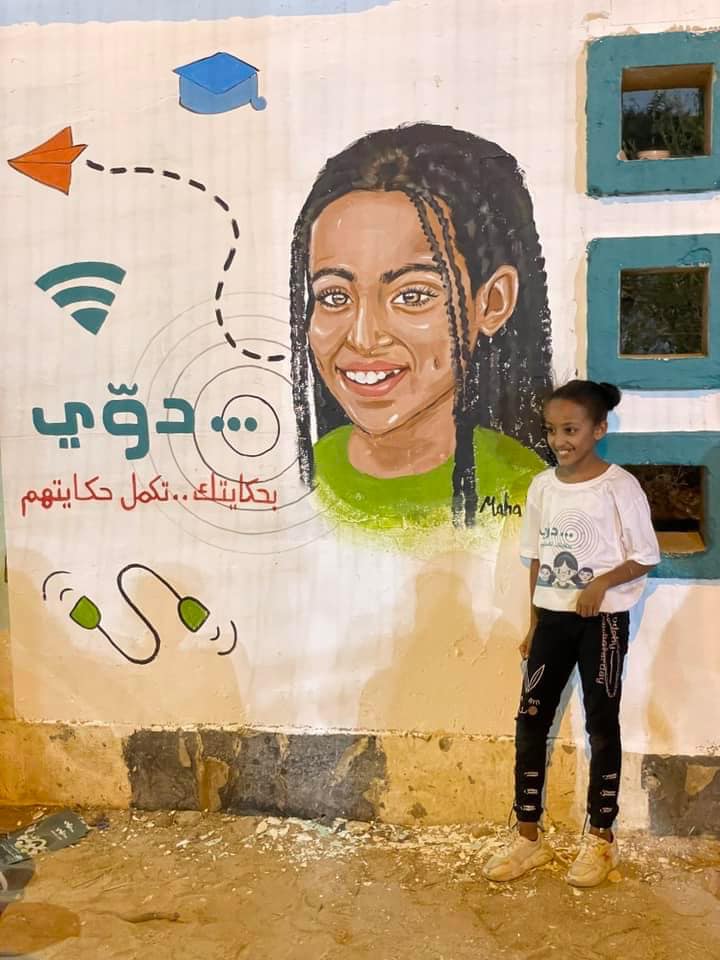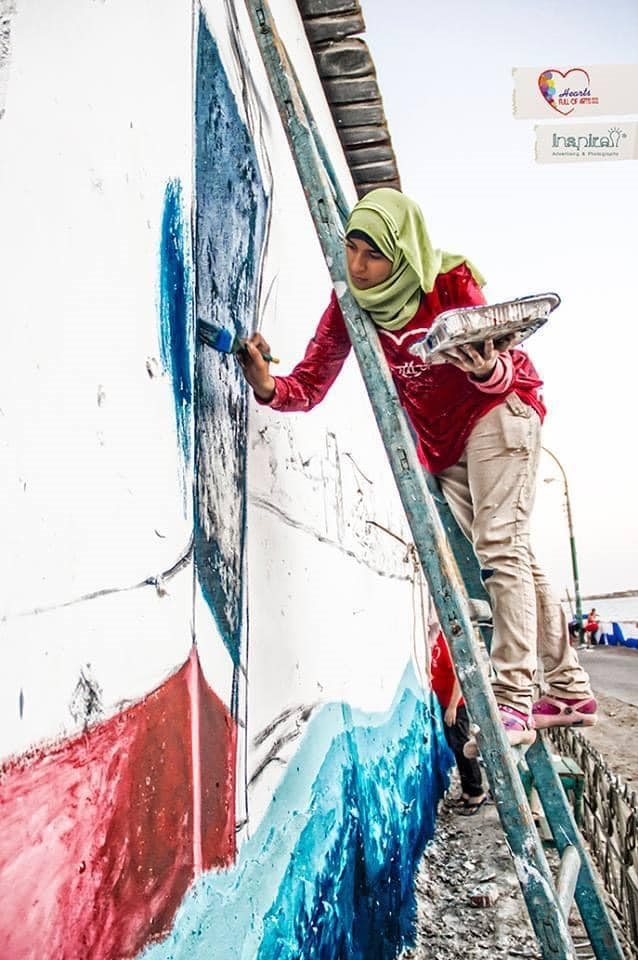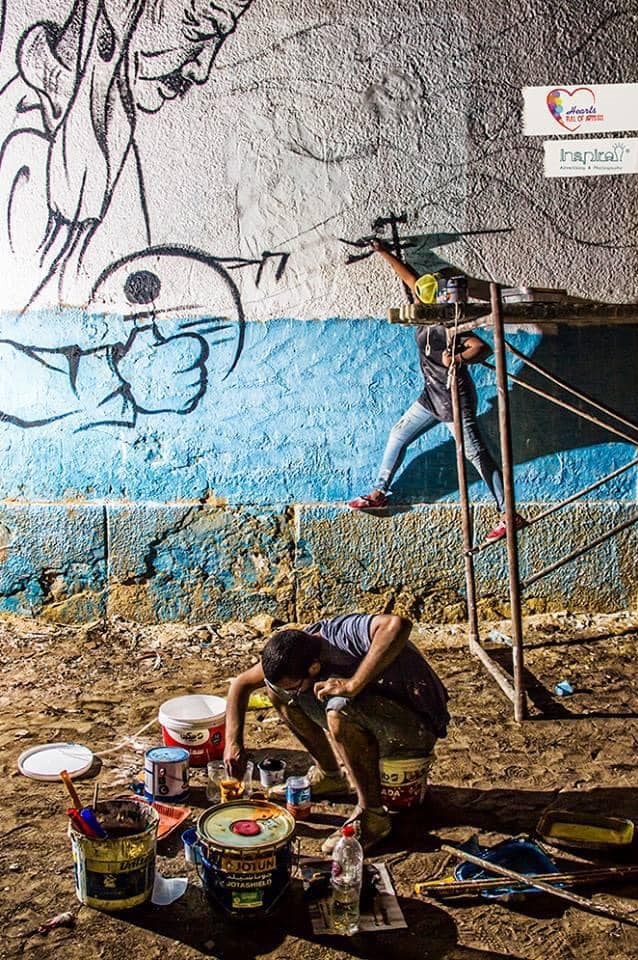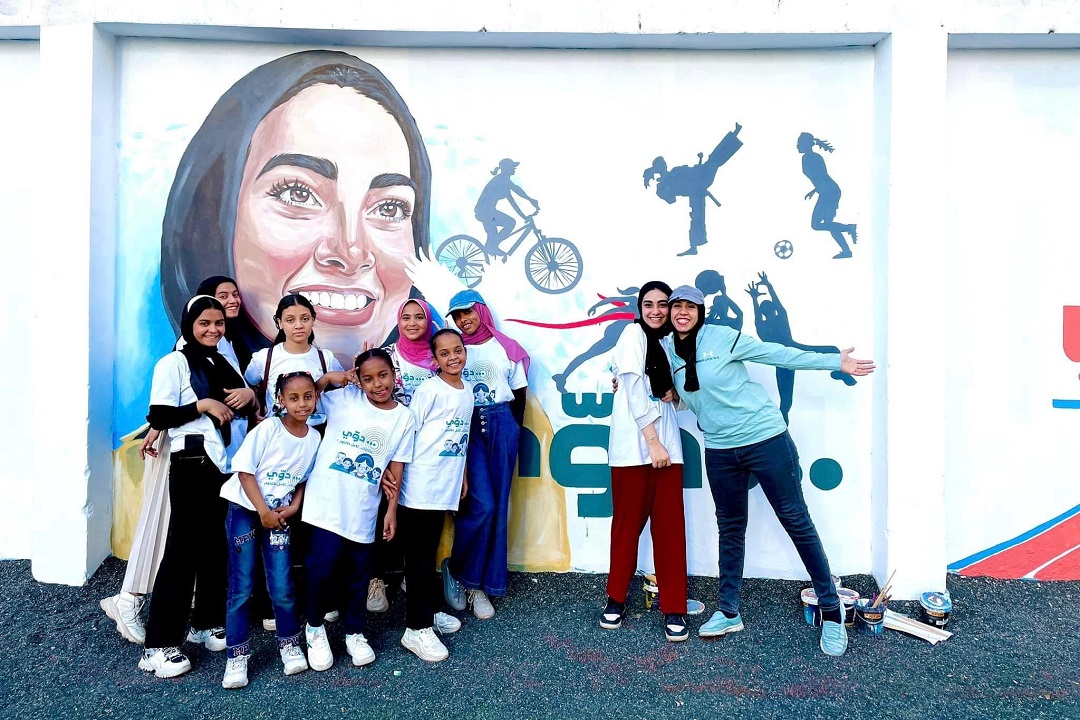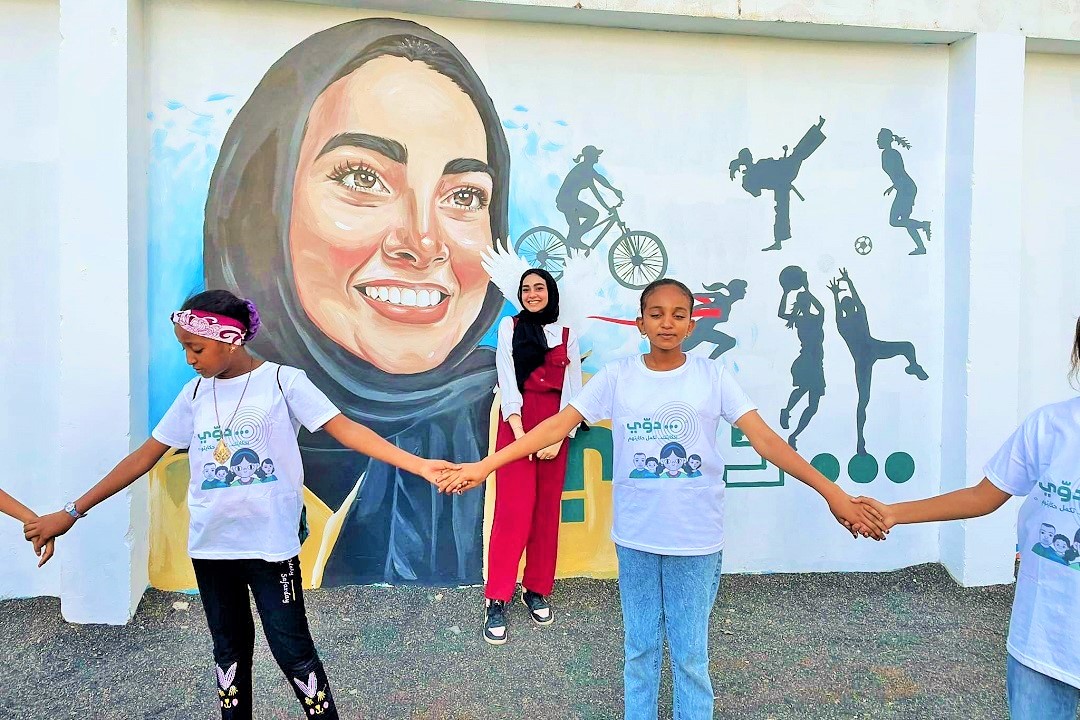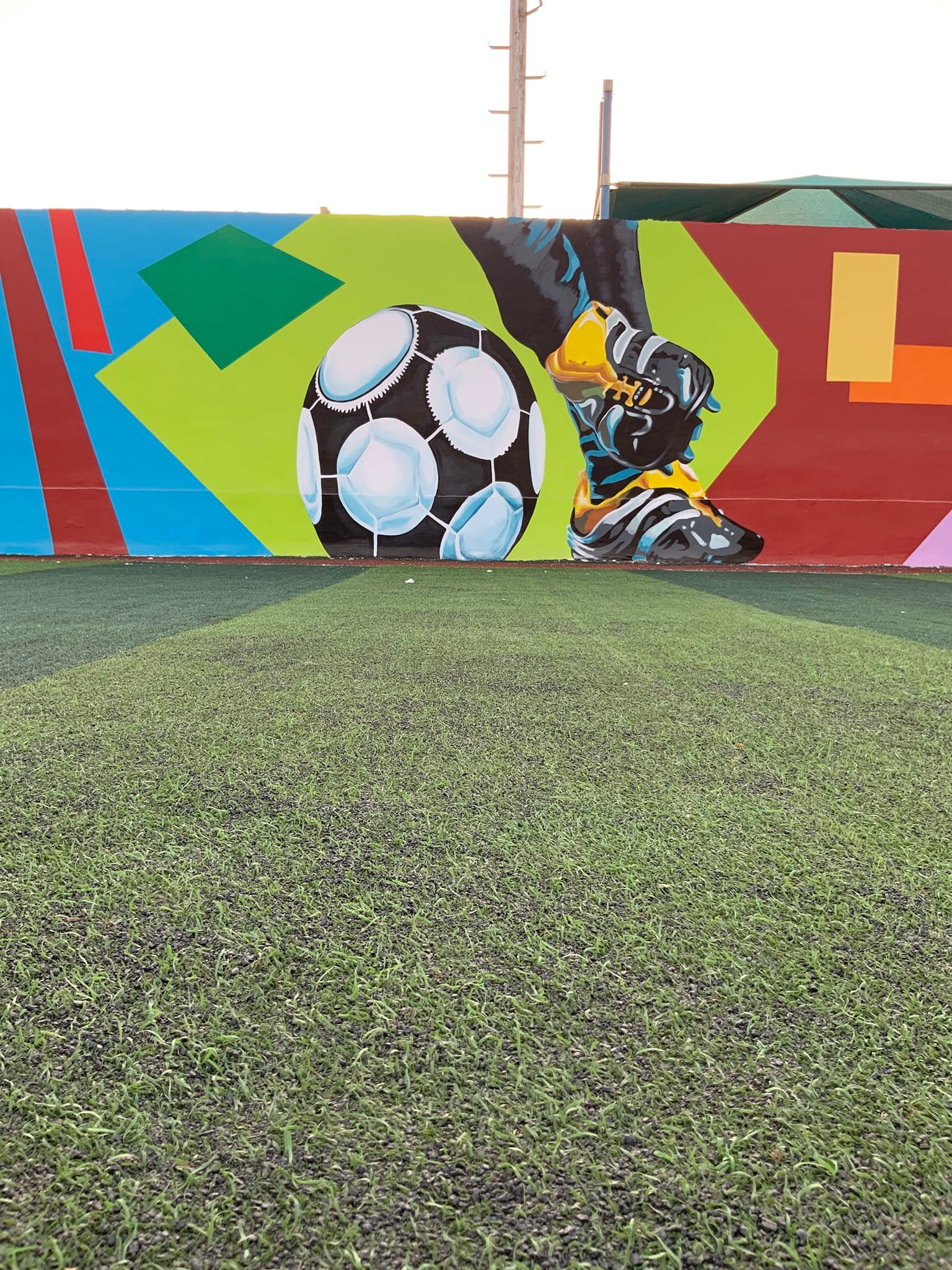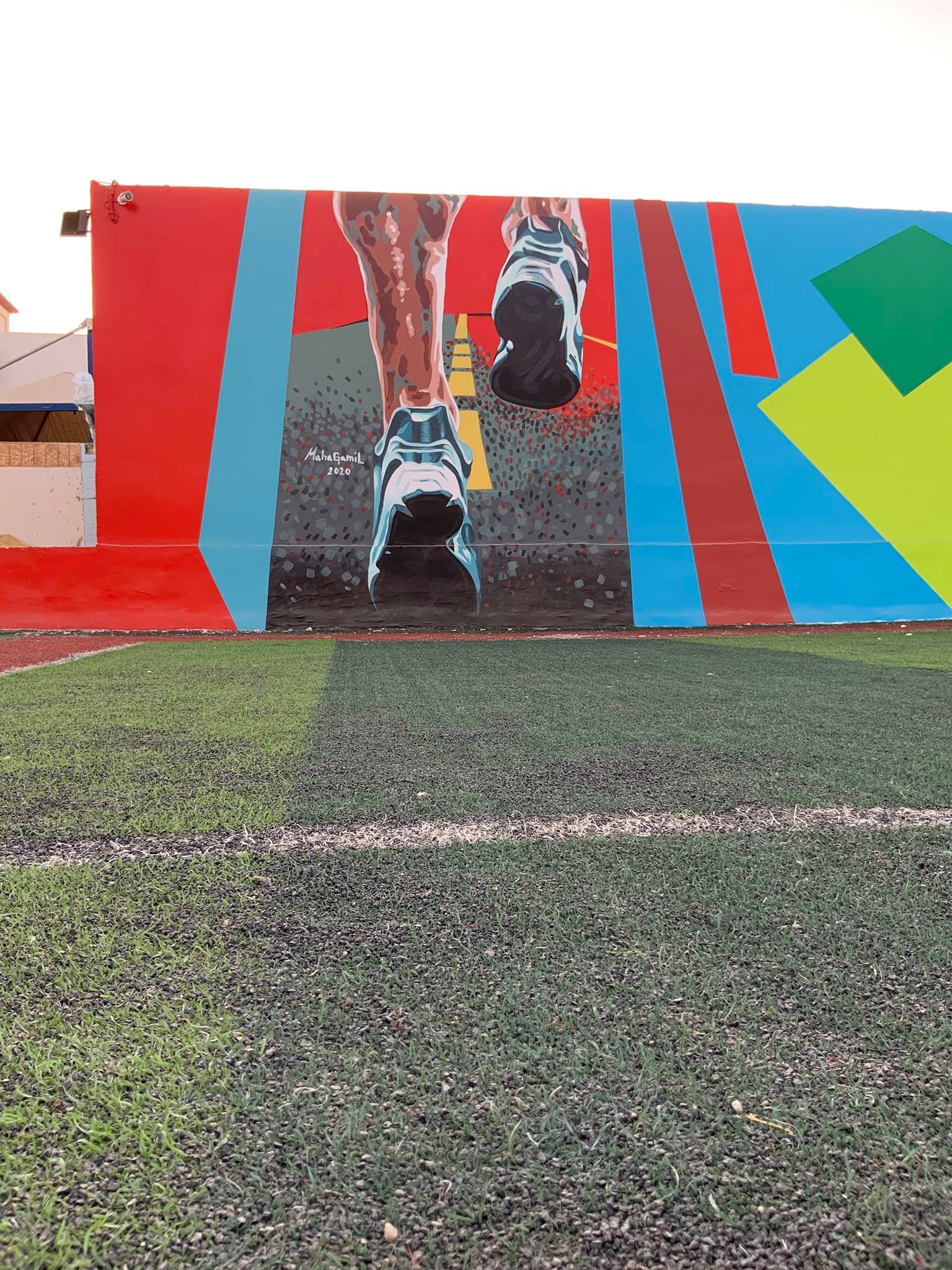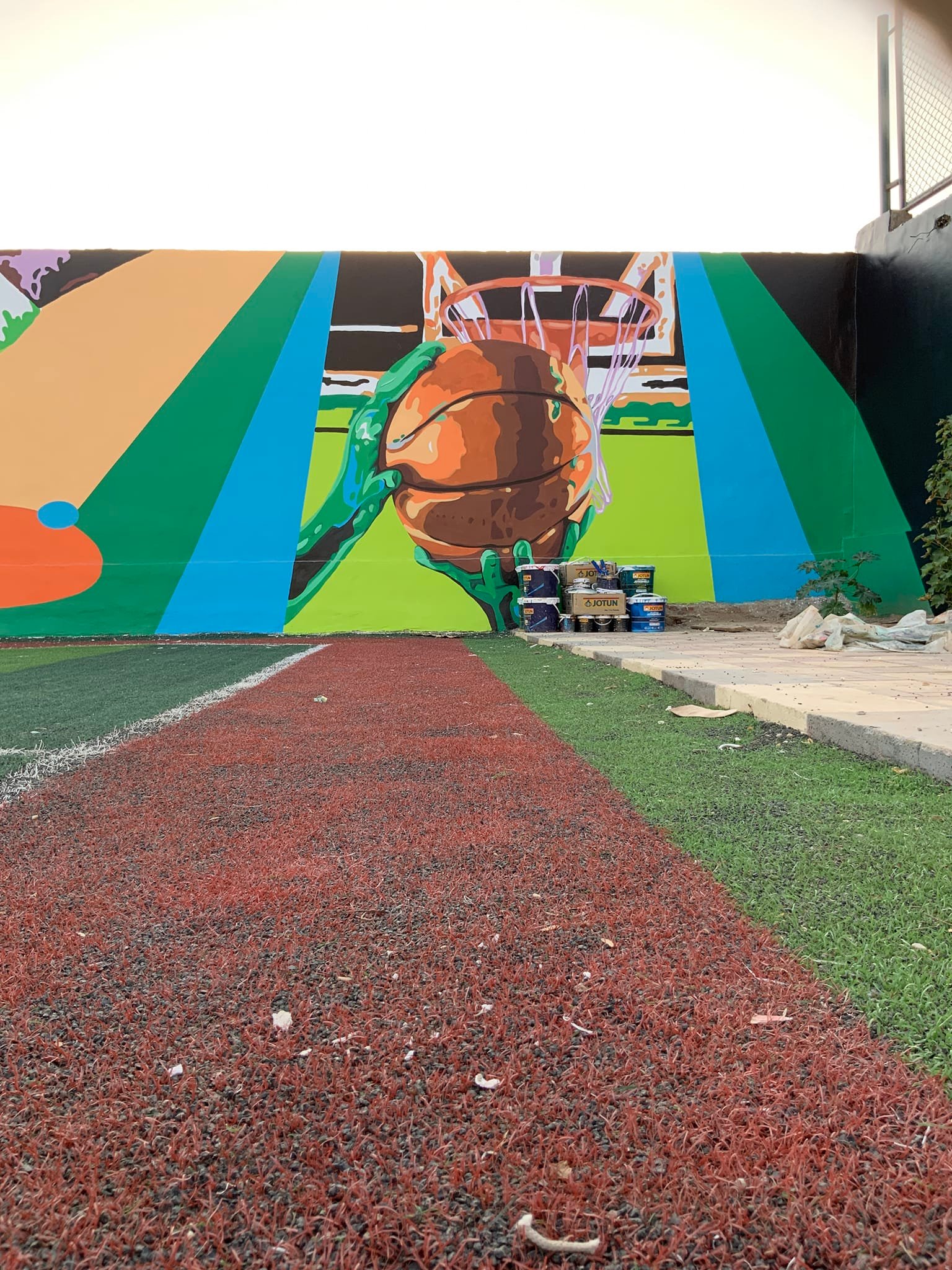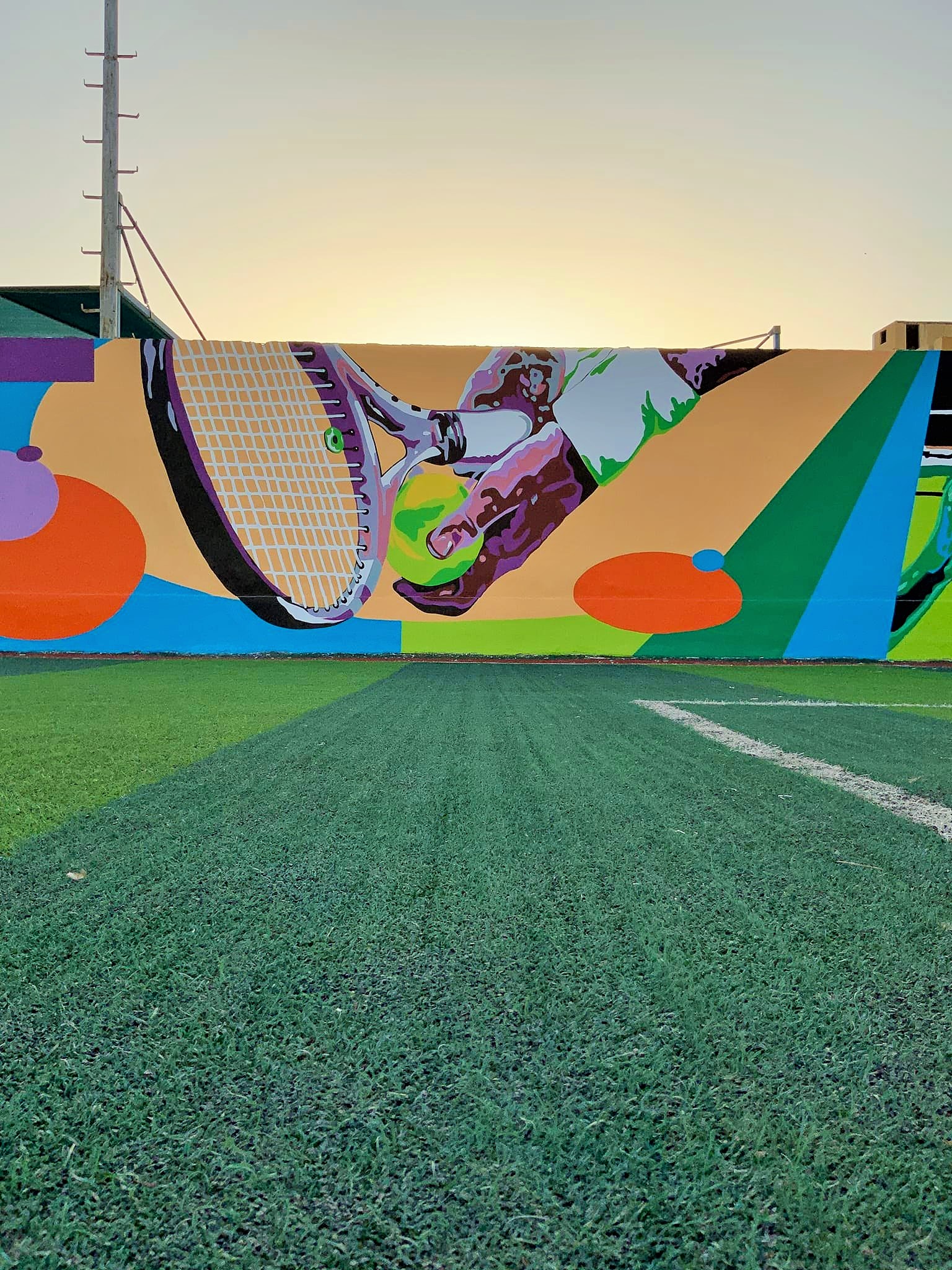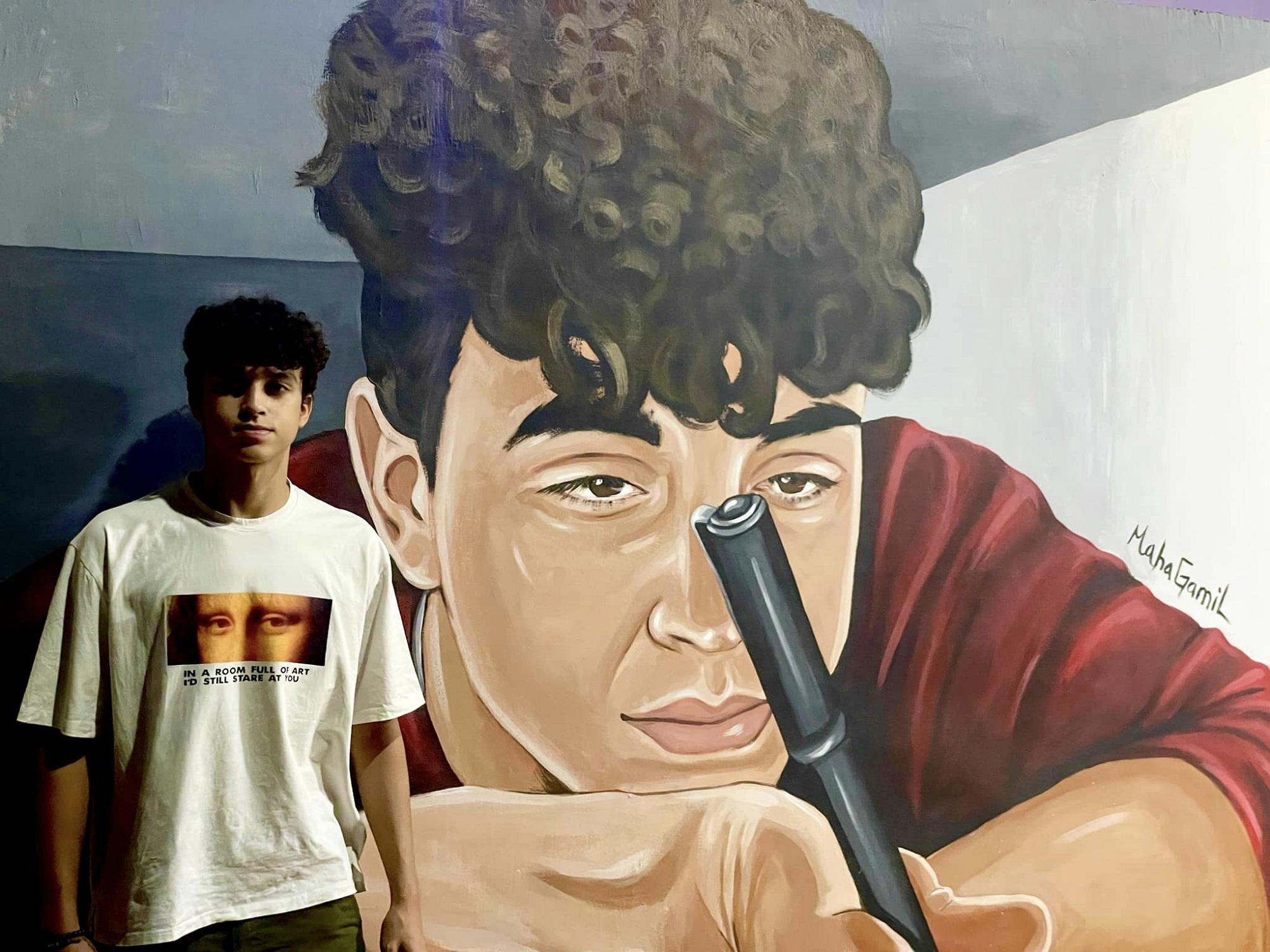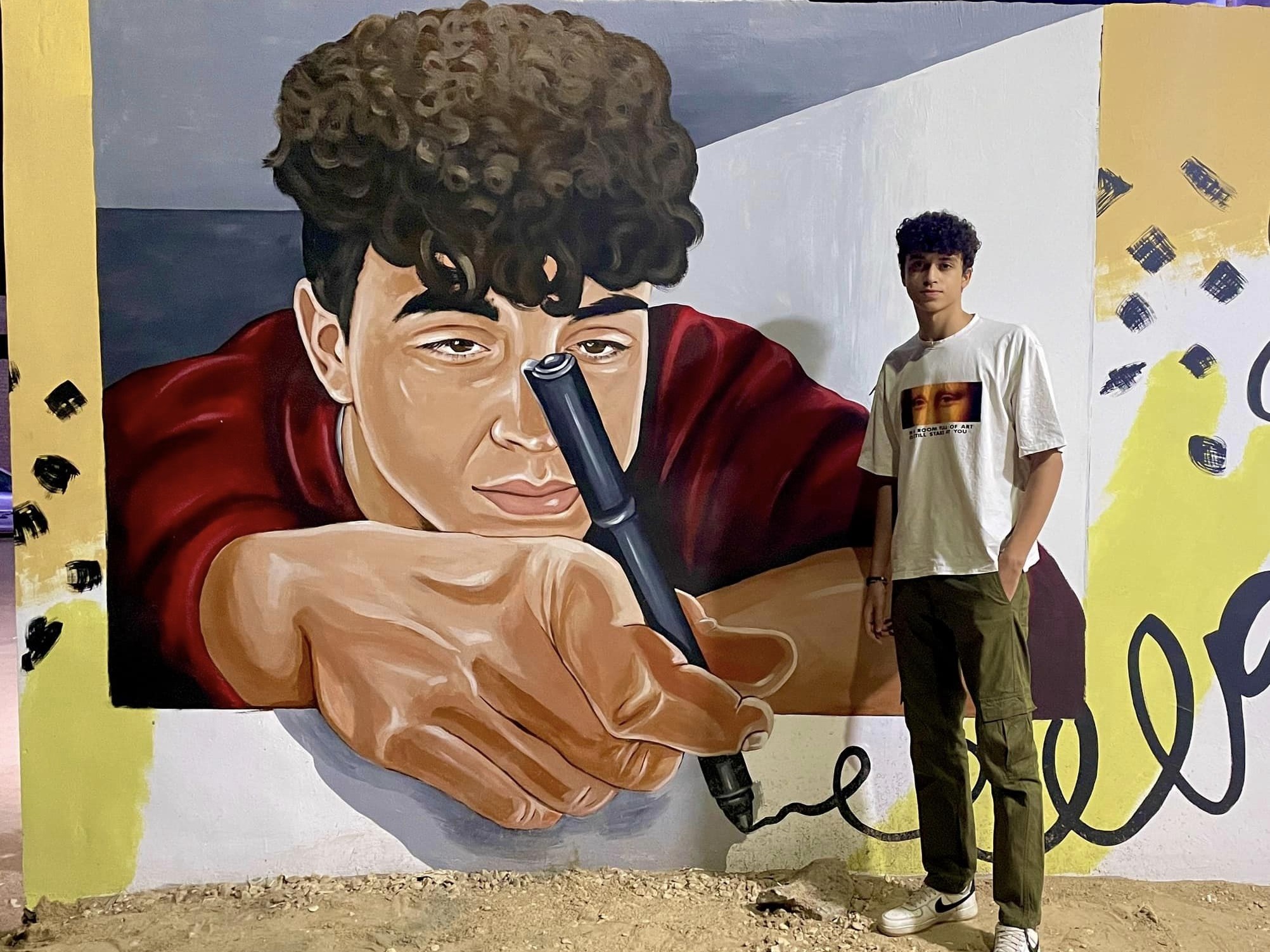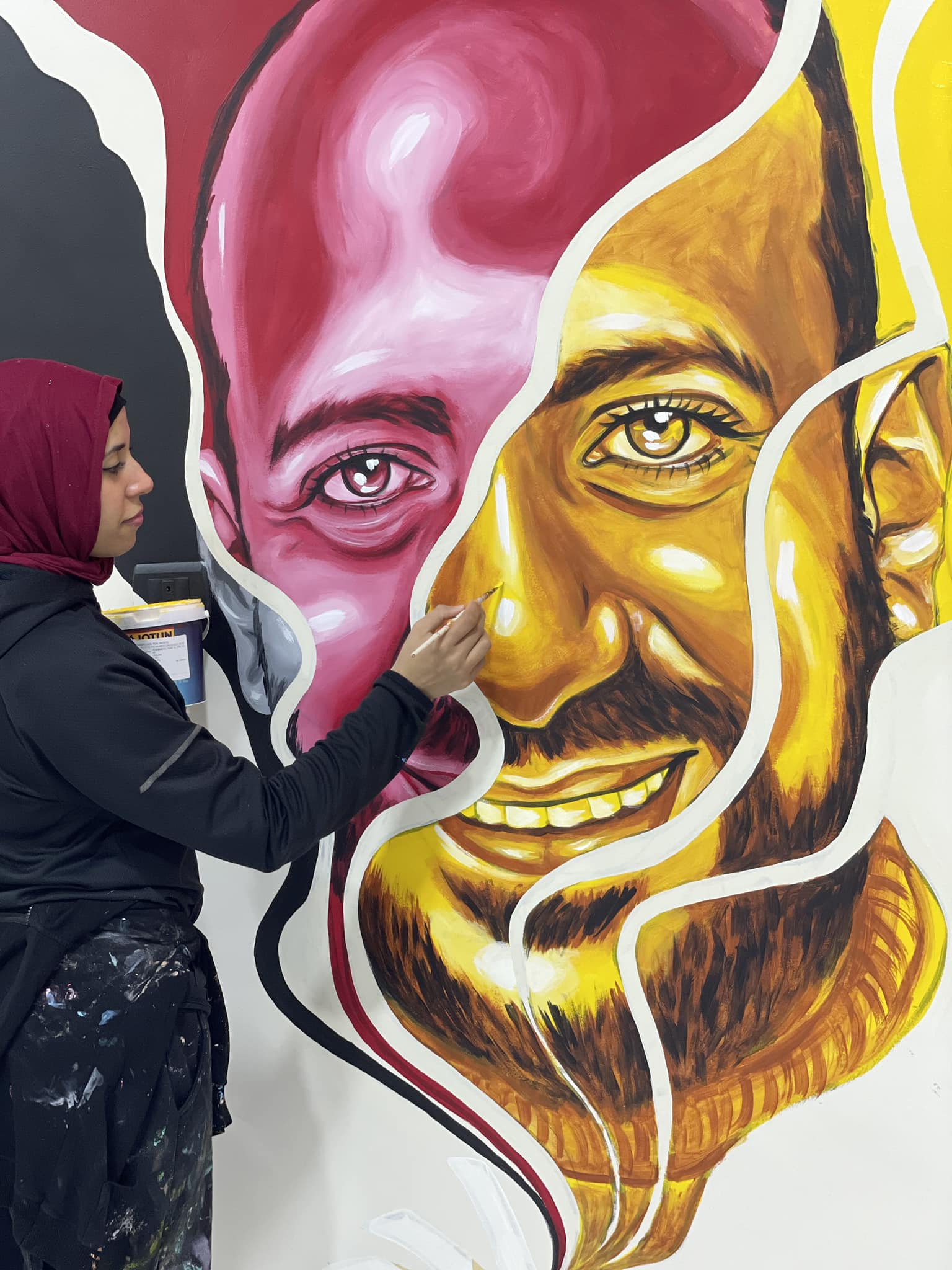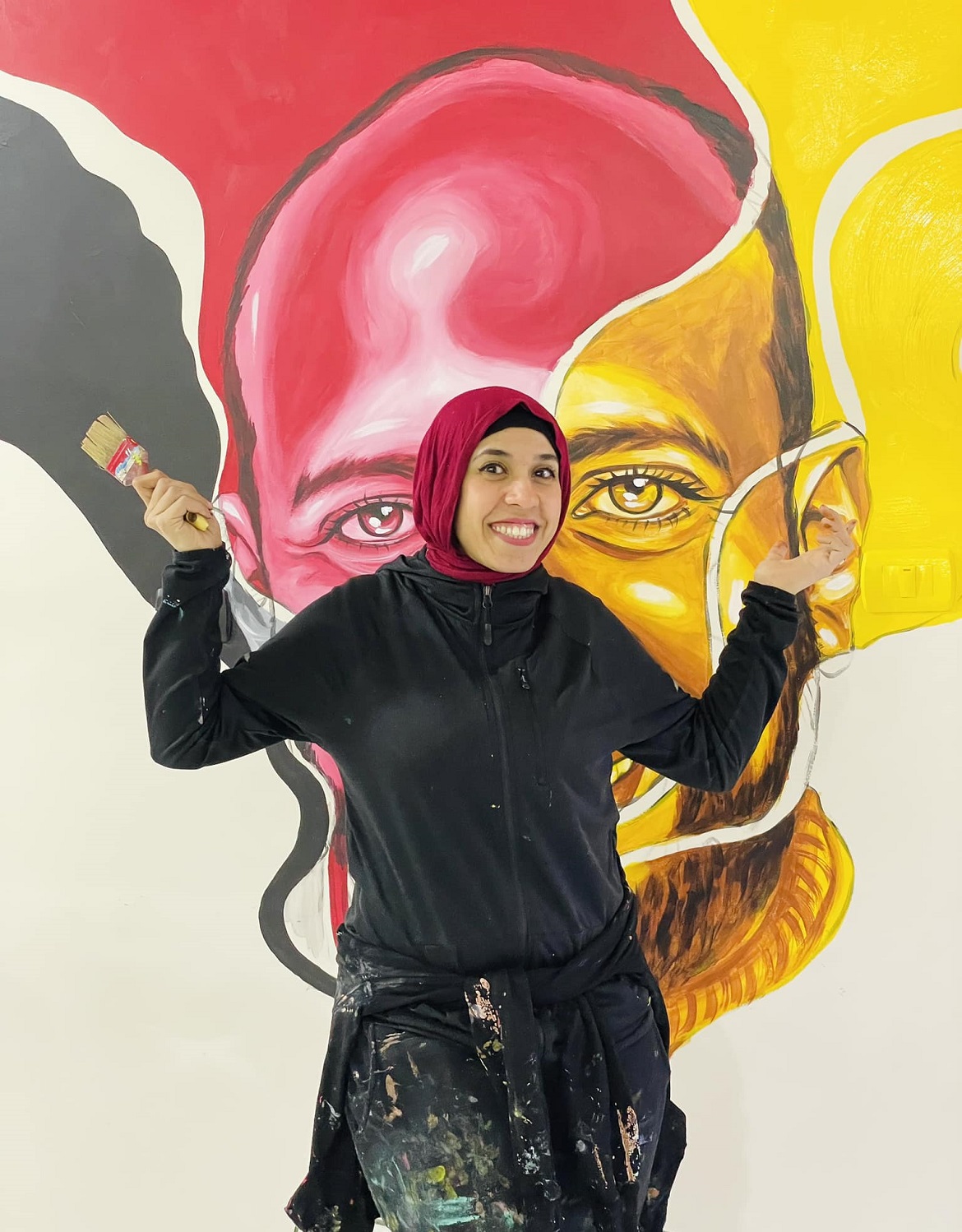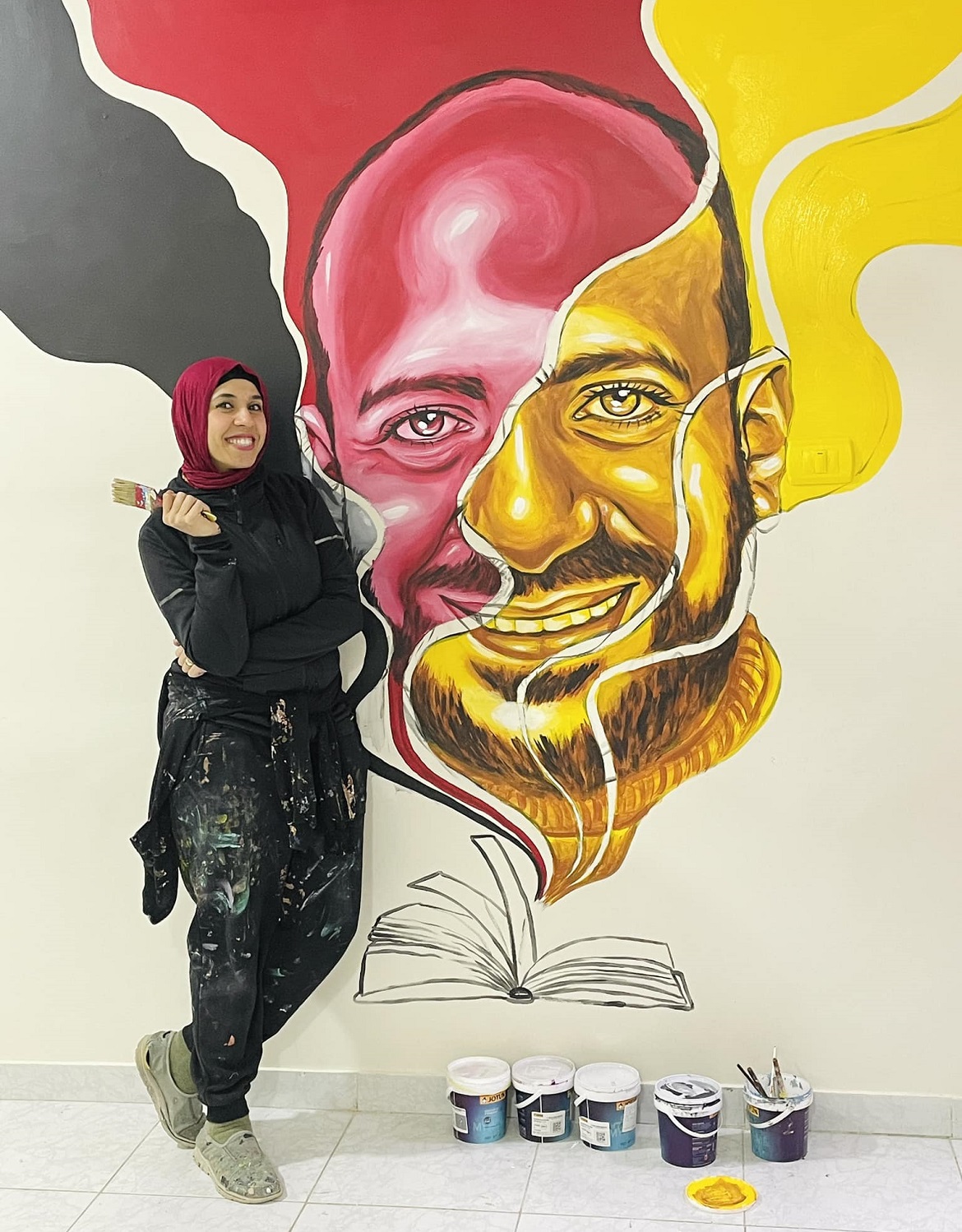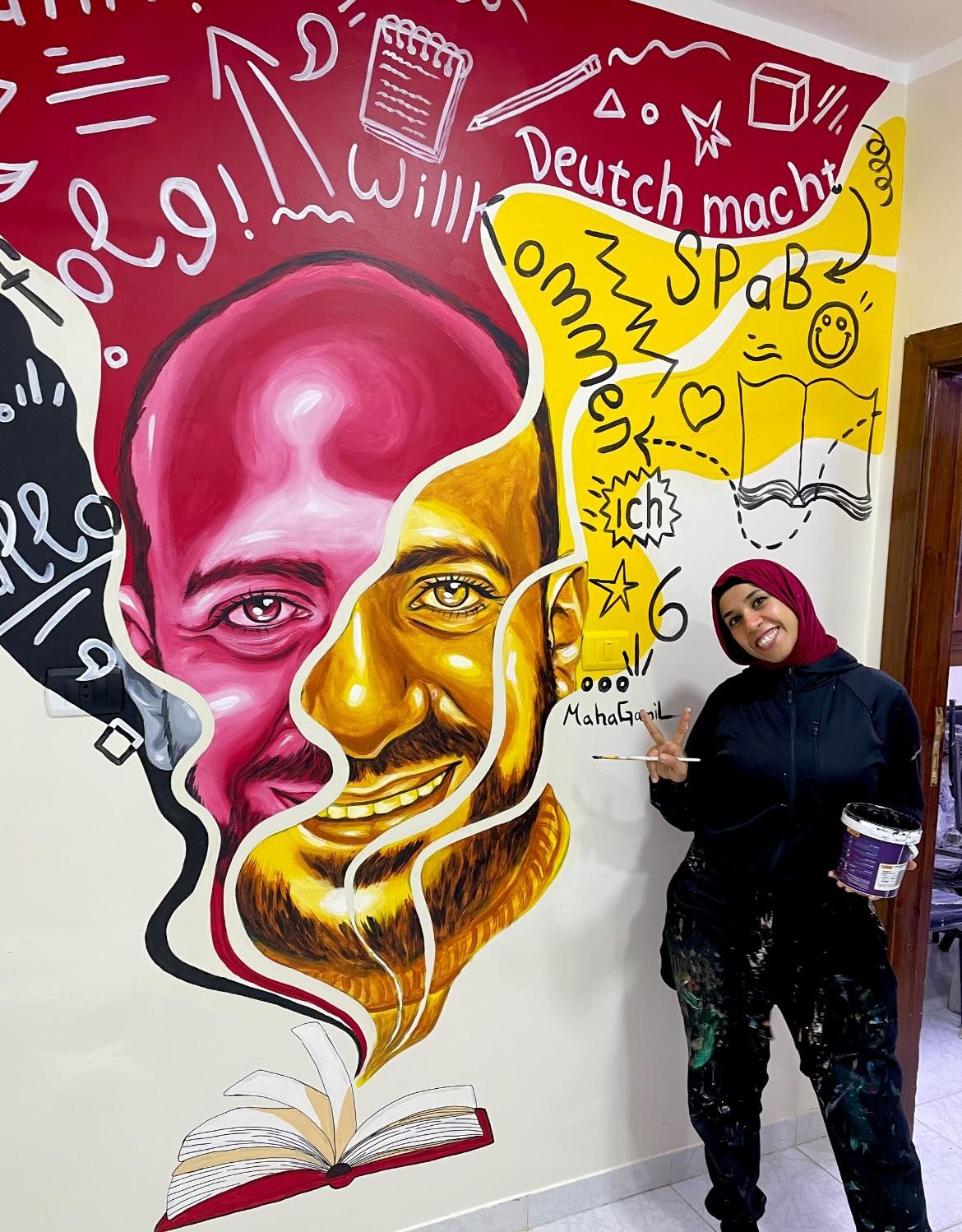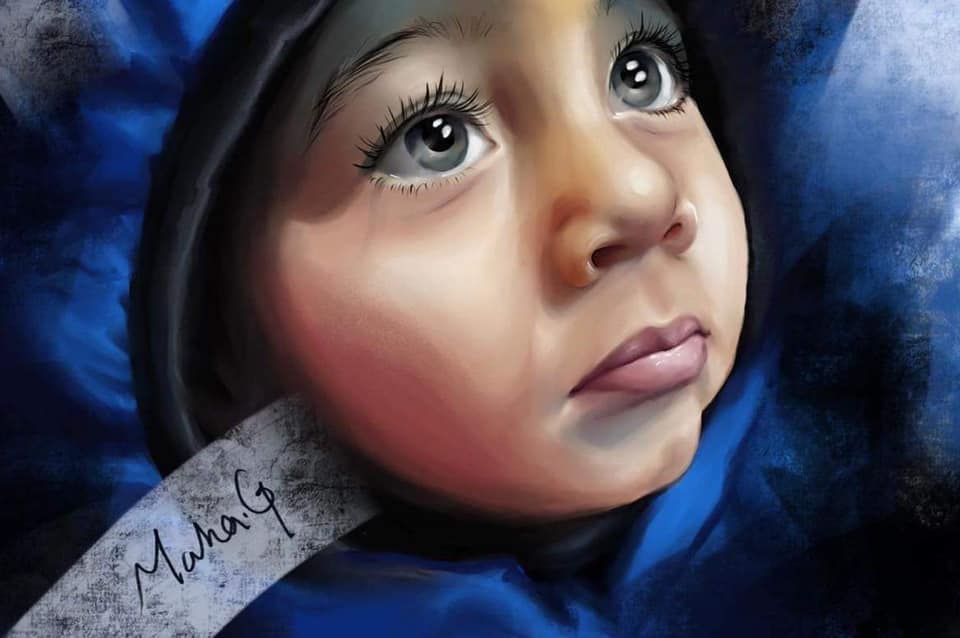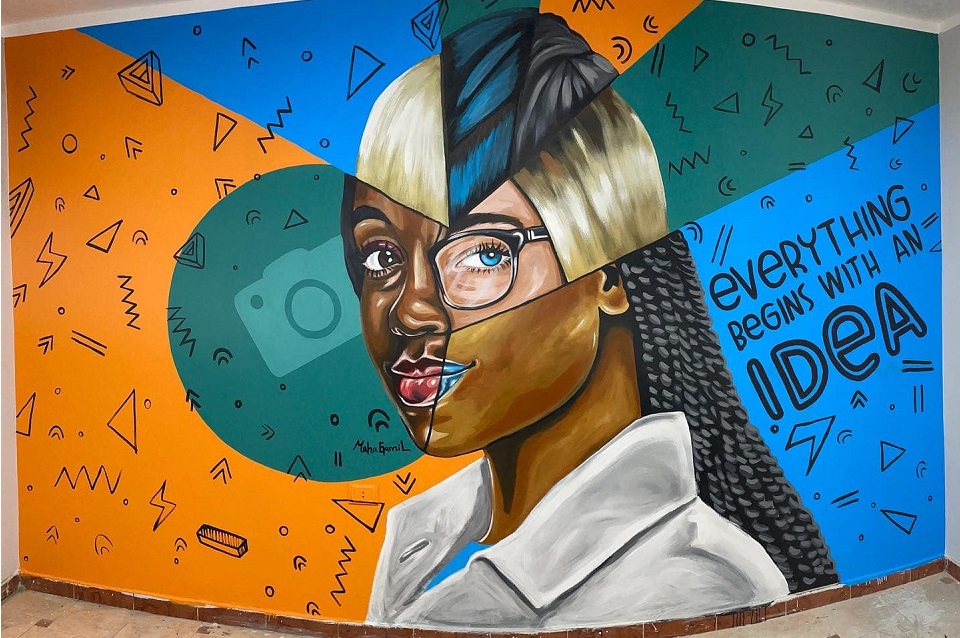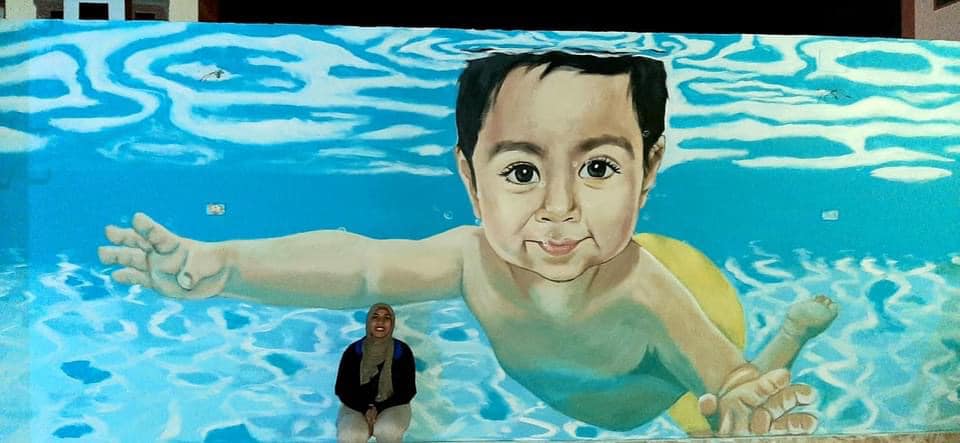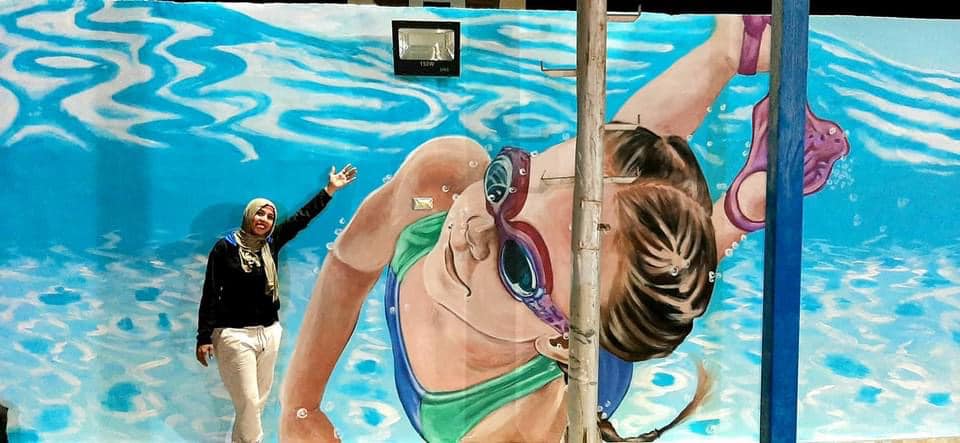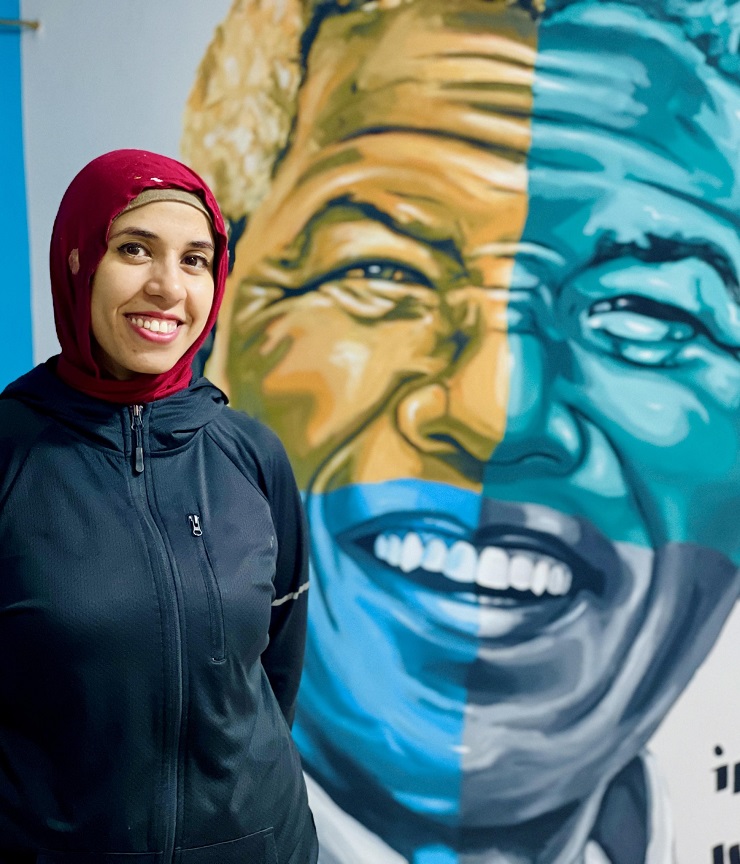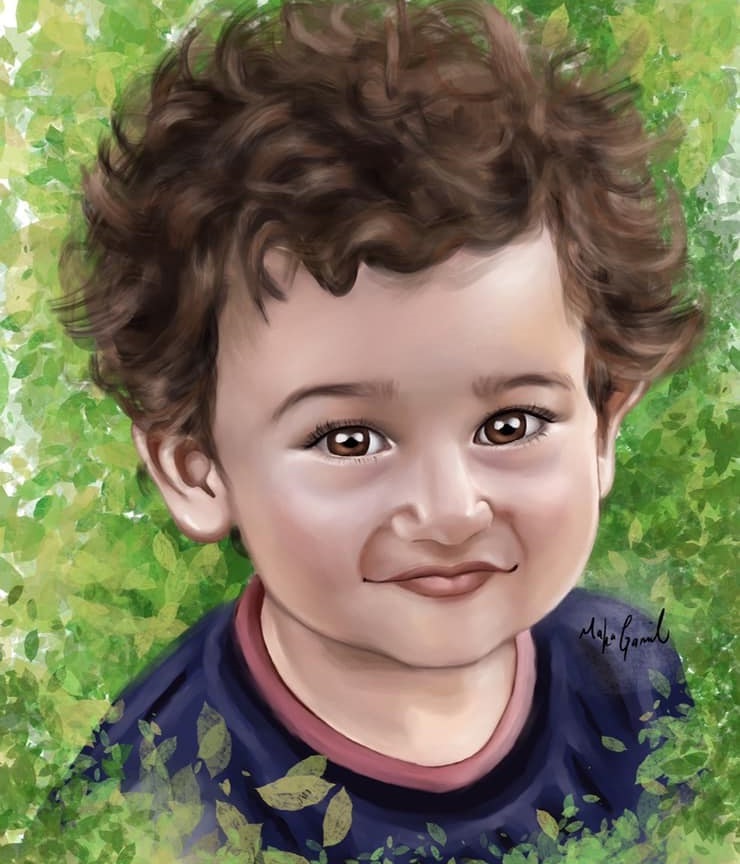On a mission to pass on motivation, hope and heartfelt energy through colors and creativity. The great artist MAHA GAMIL from the Egyptian city of Luxor is meanwhile well known across the country, she had more than 50 exhibitions and can make a living from her art. But she has chosen in new ways to dedicate her colors not only for demarcated galleries and museums, but for the people and the neighborhoods of her country by creating art in urban space.
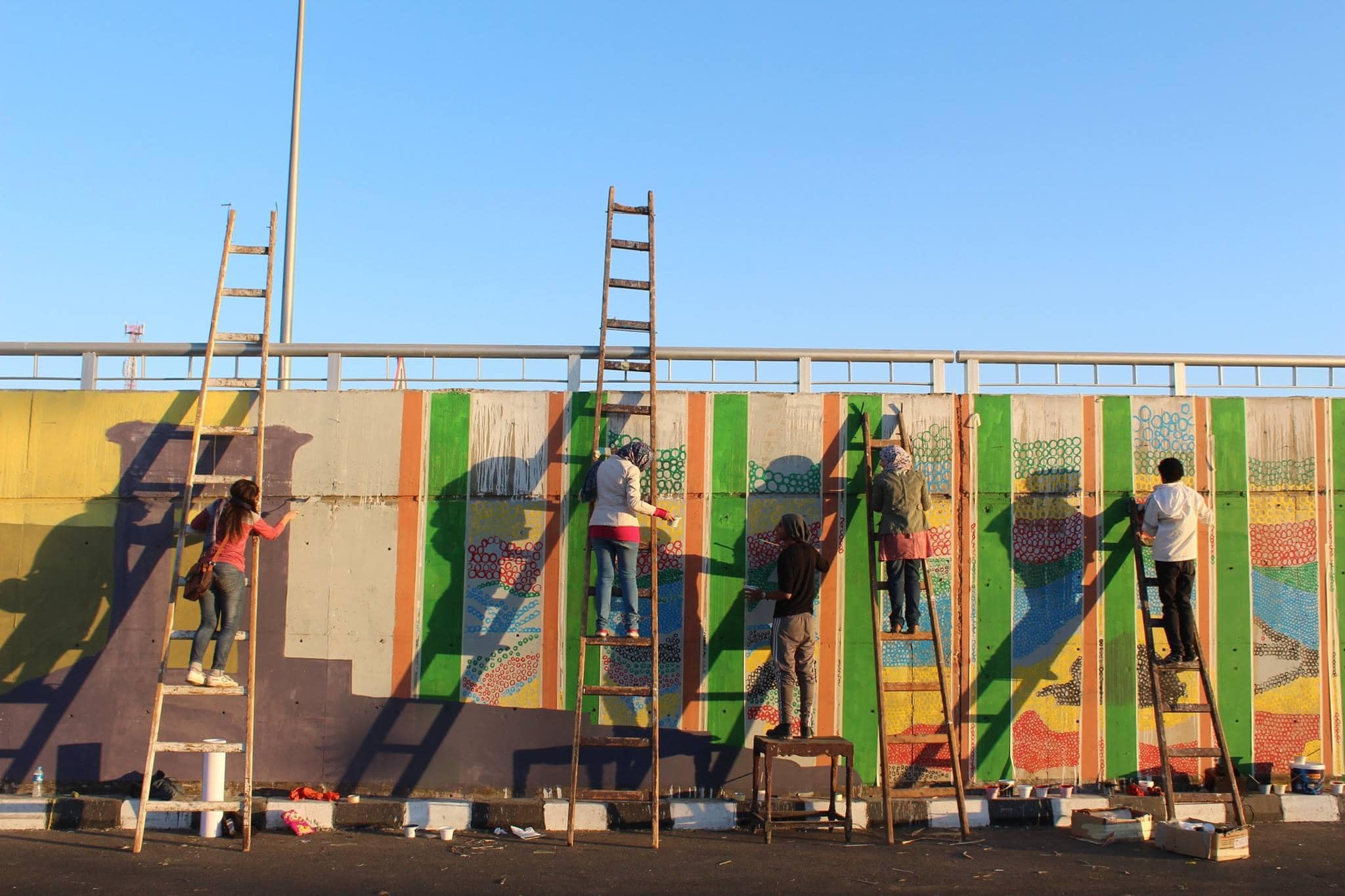
During a trip through Egypt we came across beautiful works by MAHA GAMIL in the Nubian Village near Aswan. Not only the portrait style is very interesting, also the personal message and the transmitted pleasant energy to the viewer. At the same time, we wondered how the artist created these works so that they still shine beautifully in color even after years, despite the intense weather conditions and strong sunlight.
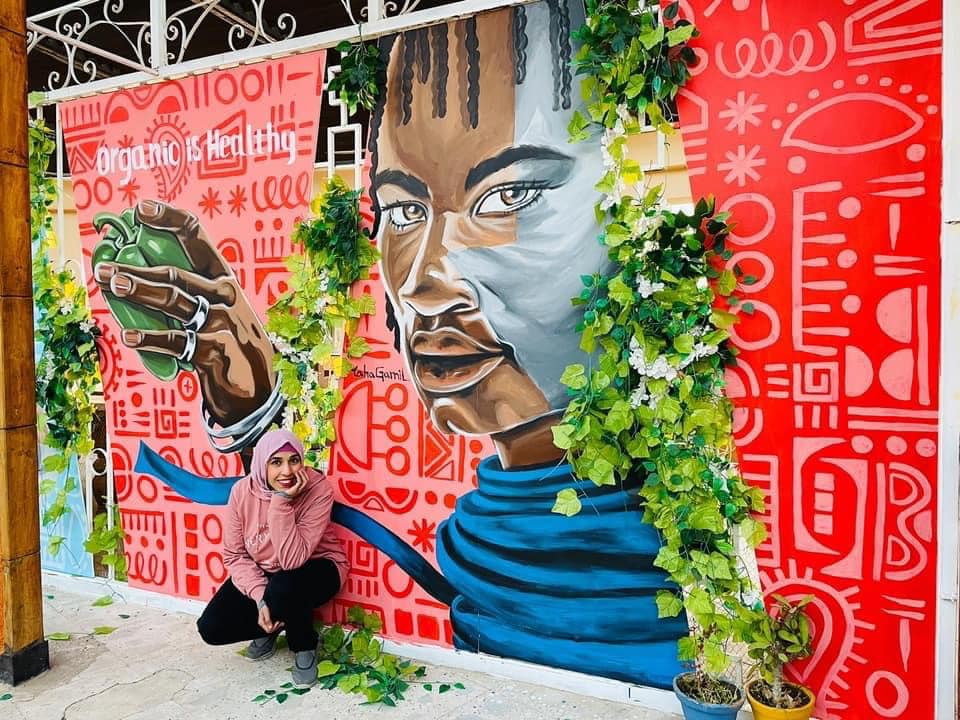
We contacted MAHA GAMIL and invited her for an interview. This turned into a very interesting article about how she started doing art, how her work developed and how it has now become an empathetic art mission for her country and for the people in the neighborhoods. The text is also sprinkled with numerous photos of fantastic artworks and cool painting actions.
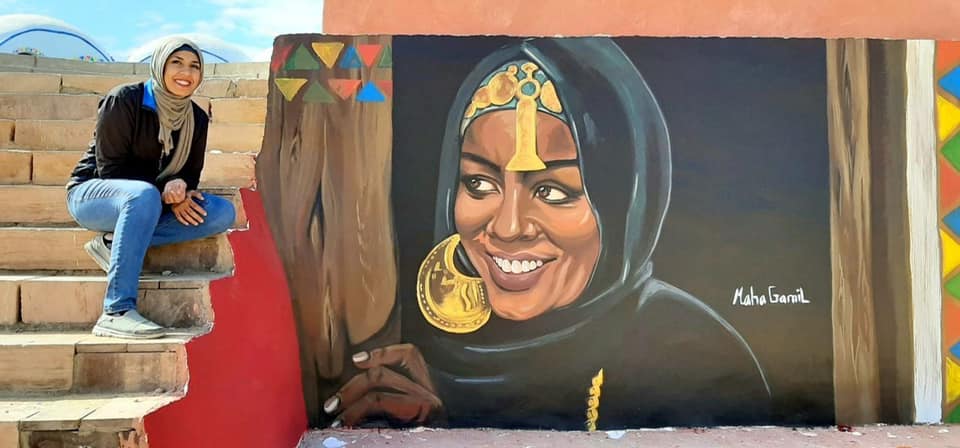
You paint portraits on house walls, sometimes in smaller format, but often also as large murals. Tell us more about your art. Why do you paint portraits and what personalities do you paint?
I draw inspiring people for the people of the region in which I paint to make them happy and to bring joy and happiness to them. Sometimes I draw girls and children to tell the community and the parents that they are the future. We must feel them and their value.
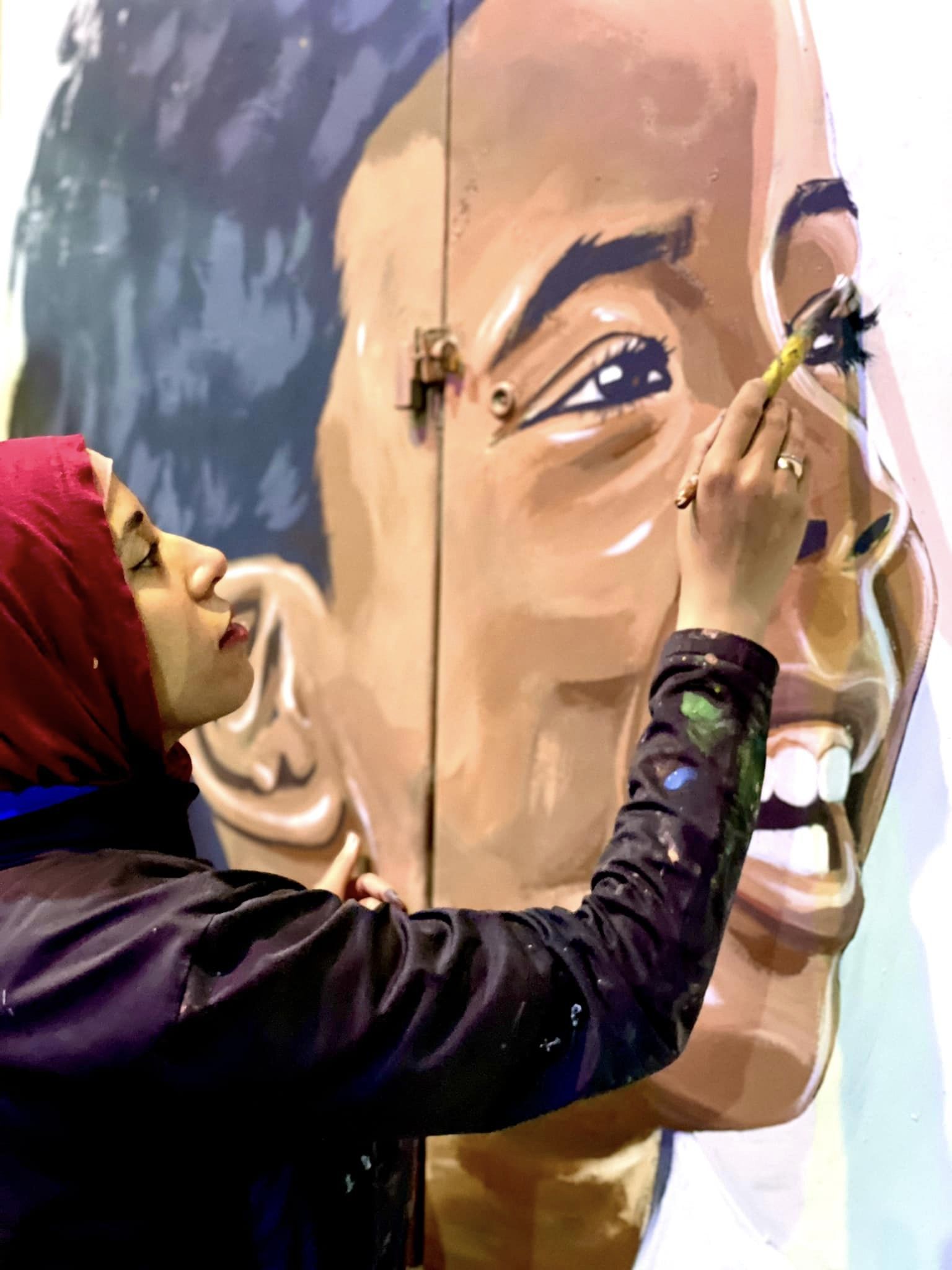
You create your artworks mainly with wall paint and brushes. Tell us more about it. How do you make your artworks and do you also use other tools?
My husband and I paint on the walls with a clean material that accompanies the print from the Jotun company. We use brushes and all sizes, especially large sizes for the brush. The colors are plastic and the medium is water, but when it dries it is not affected by natural factors such as sun, rain and humidity. We make our designs with iPad and laptop using programs including Photoshop and Procreate. Any person we draw, we photograph it in reality, and then we put it in the design to collect the full vision for the proper implementation.
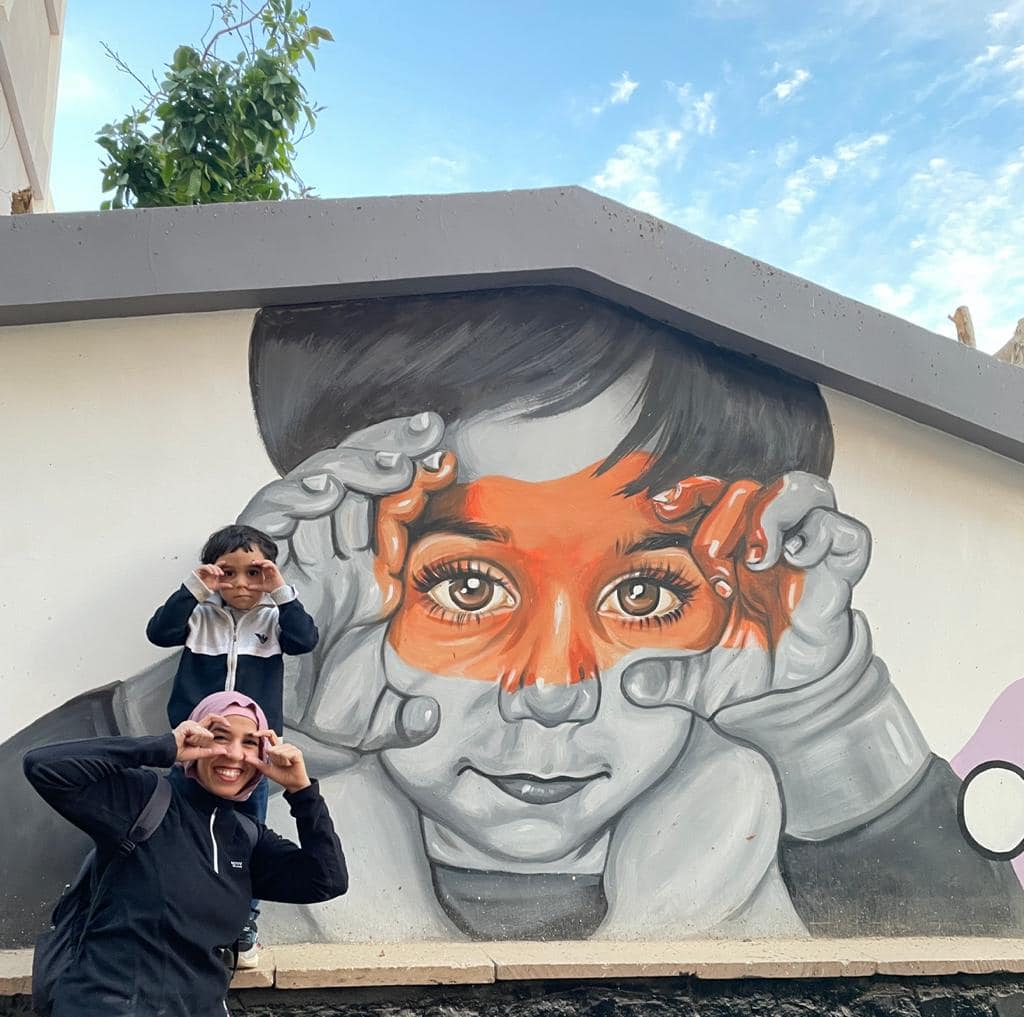
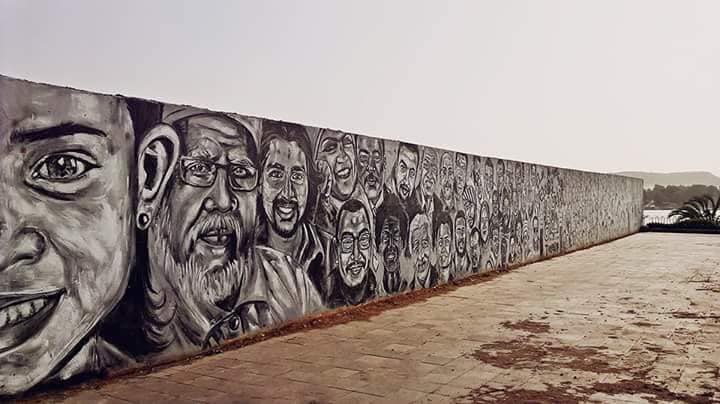
Egypt is a country that is exposed to constant and also strong sunlight. There is also a lot of wind and this is then mixed with sand, this is certainly a challenge for the paintings. The light bleaches it out, the wind and sand make the colors fade. Tell us a bit more about your experience and what other tips you have for keeping a piece of art looking beautiful for many years, even in blazing sun.
Yes, really in the beginning, we went to the market for paints and colors, got to know all the raw materials, and used all the raw materials to find out which type is the strongest and most suitable for the weather in Egypt. Moisture resistant, and it can be washed if there is dust or human dirt, and the medium to which it belongs is water, but when the color dries it does not affect it. No water, no petrol, no lightening, or any liquid substance, because it petrifies and its colors are delightful and do not fade. But those colors are very expensive compared to the other colors on the market.
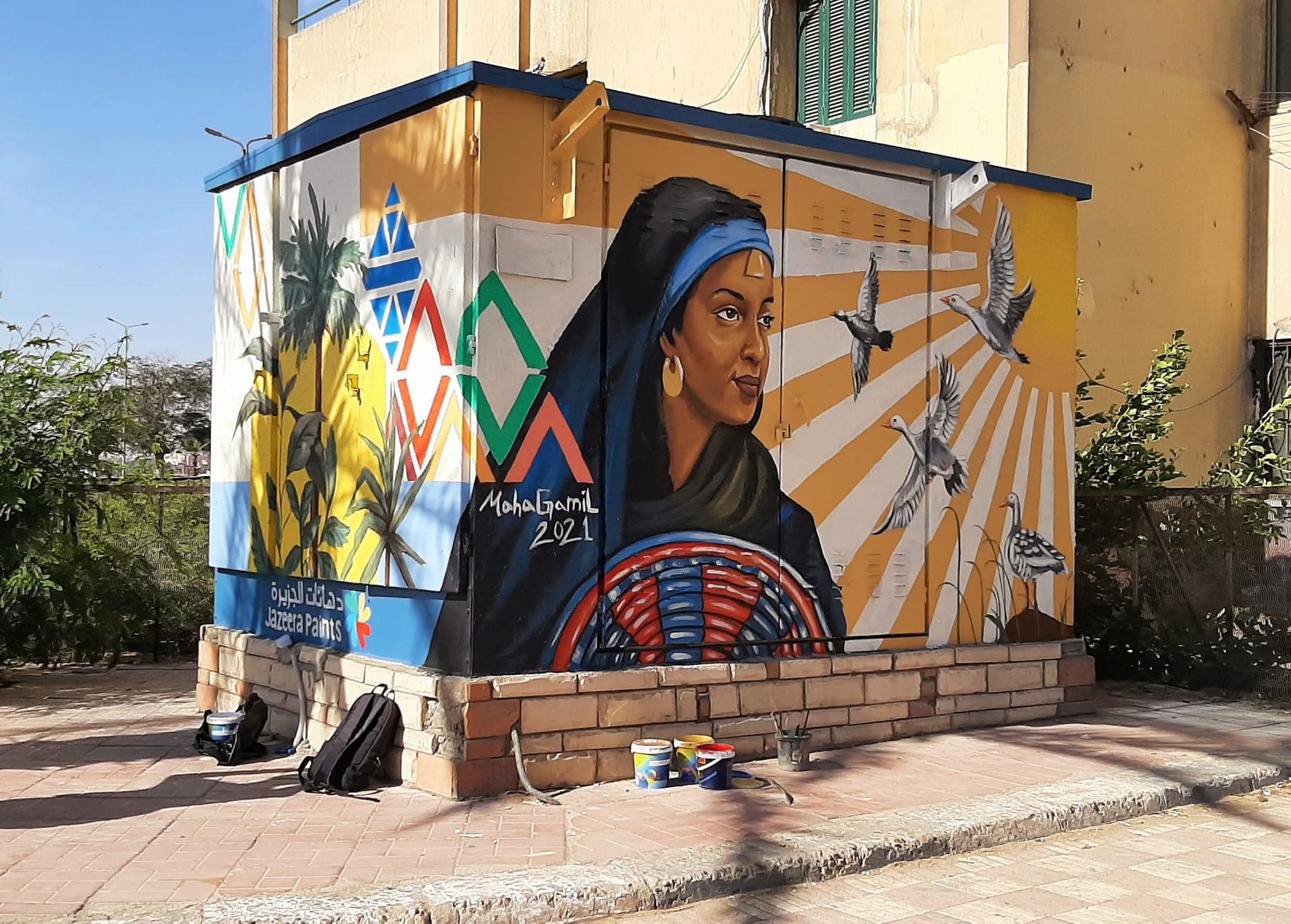
Do you also paint on other surfaces than house facades? Like on canvas or other materials?
Yes, I paint on all the things that allow drawing on, for example, paintings and boat sails made of thick cloth and wood and everything. My husband and I are fine arts graduates.
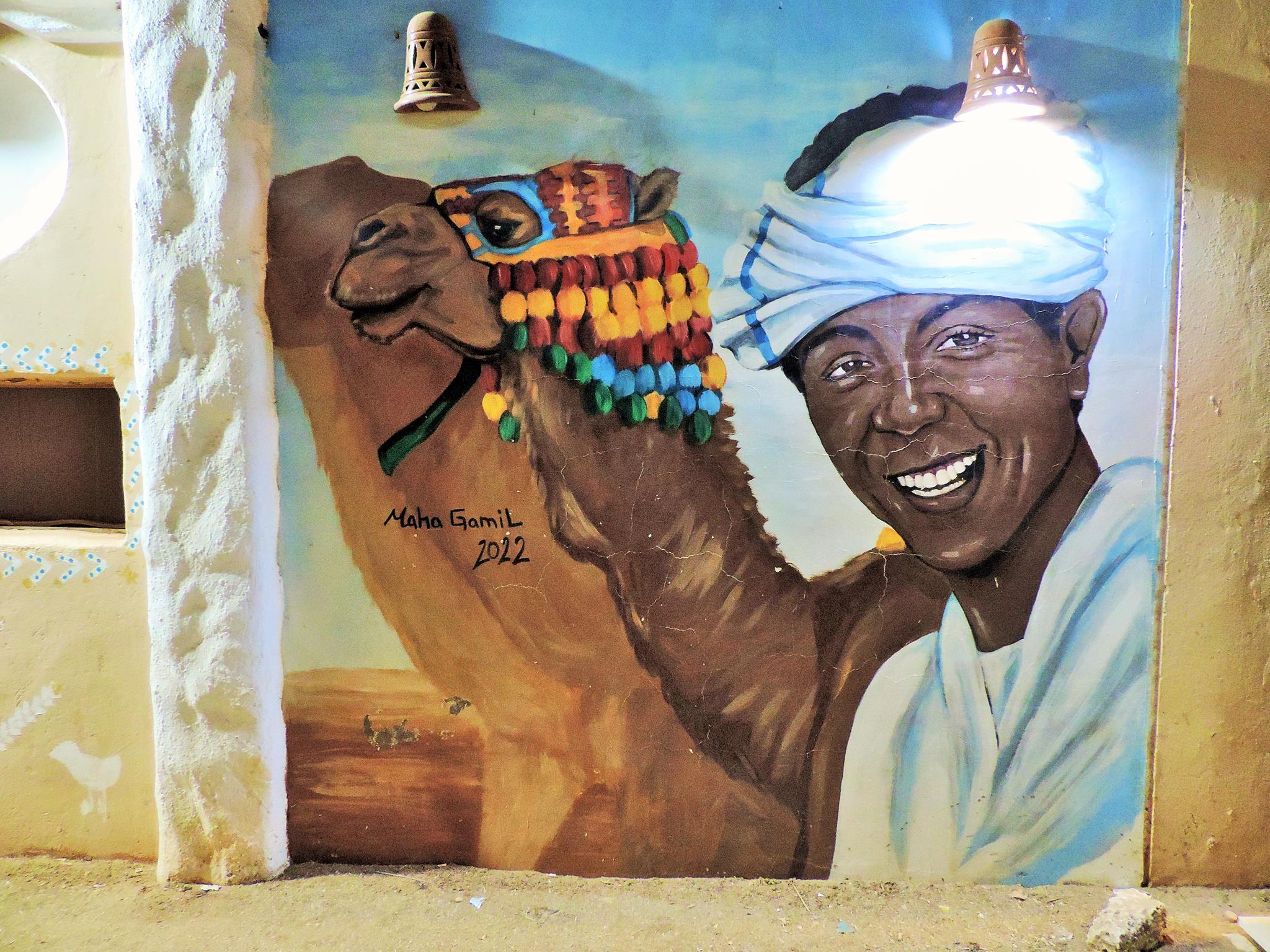
The first time we came across your artworks was in the Nubian Village near Aswan, where some of your fantastic portraits can be seen. Tell us more about this colorful and creative area.
There is Hessa Island and Aswan Island, and the places there are called Elephantine, and West Suhail. Actually we painted in all Nubian places there and all Nubian villages. We draw women more because of their importance in the Nubian environment. They are the ones who beautify the house at any celebration, and they are the ones who make food, take care of their children, and take care of all responsibilities in their home. Also the colors of the Nubians are inspired by their nature, the blue color from the Nile and the sky, the yellow color from the desert and sand, the green color from green nature, plants, palms and trees, and the red and orange color from the sun.
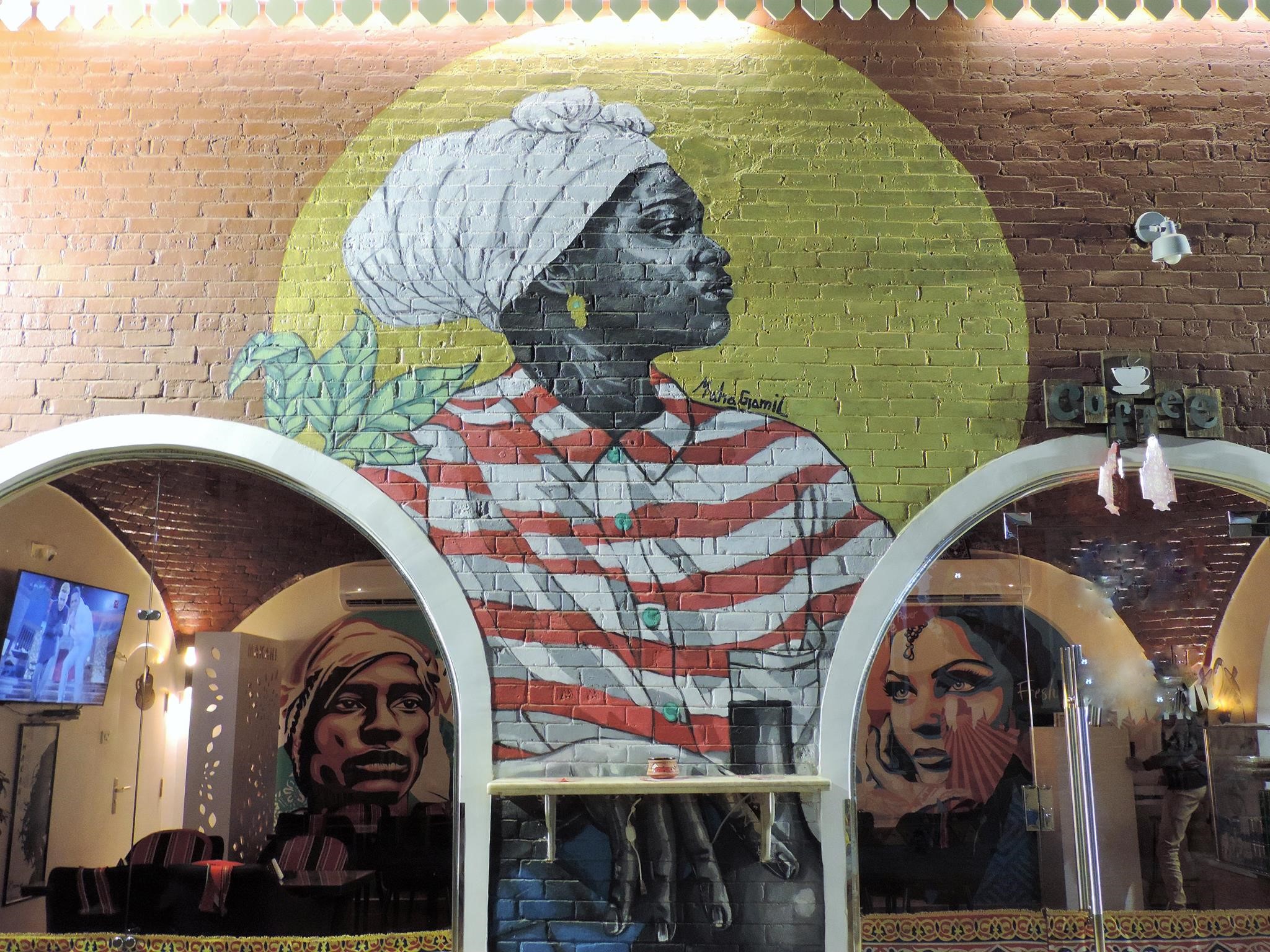
Where in Egypt are there other artworks from you? And are there artworks from your in other countries around the world?
So far, there are no works of mine outside of Egypt, and I hope we will soon paint all over the world. But here in Egypt we have artworks in Cairo, Luxor, Quseir, Hurghada and Aswan.
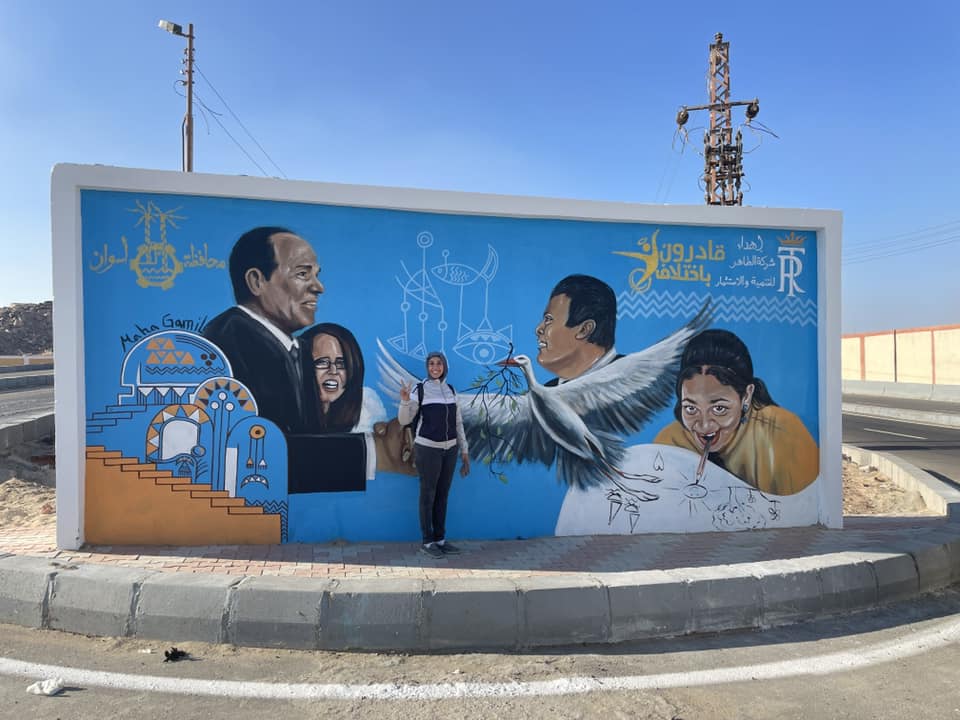
Tell us a little more about how you started painting. How did you get into art in the first place and how long have you been doing it? How did it start?
When I was in the first year of my studies at the Faculty of Fine Arts in 2009, I met my husband, the artist Ali, who was my colleague in the college in Luxor. And he told me that I am very distinguished in drawing large areas, skilled and fast. Then my enthusiasm increased and I liked the idea, so I made my decision to start painting the walls of my country. First in the city of Aswan. I went to old school friends and explained the idea to them, and they welcomed the idea that we would be a small group participating in the beautification of their city. And we went to the governor of Aswan and presented the idea and he agreed with all love and pleasure and even supported us. And we started, and then I called my colleague, Ali, and told him that I succeeded in that idea. And I asked him to come and join me. After that, I decided to dedicate my life to street art because it is a meaningful community participation and to highlight the most important topics
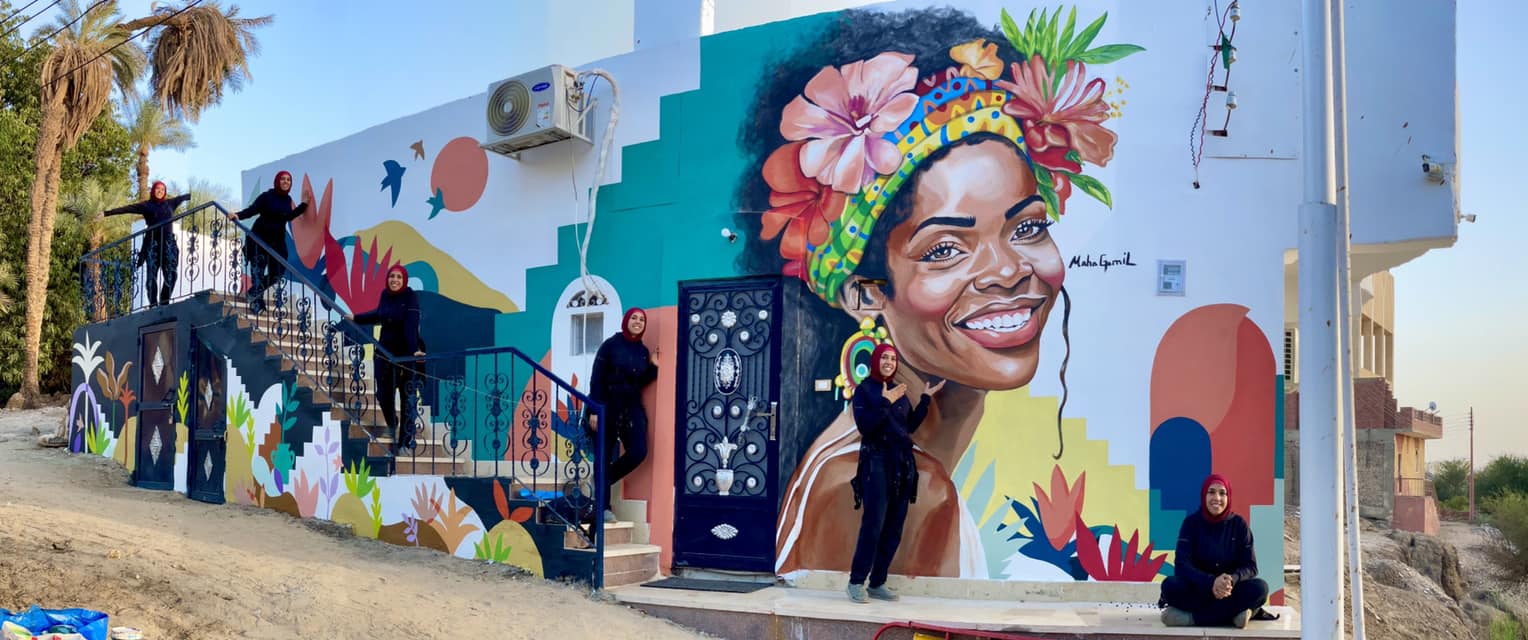
You said that you and your husband are art graduates. What college did you go to and what exactly did you study there?
Yes, we are the same age and grade level We graduated from the Faculty of Fine Arts in the district Zamalek in Cairo. The college is located there. My husband and I studied sculpture and decoration after graduation. I was in the oil painting department which means I painted all kind of motifs.
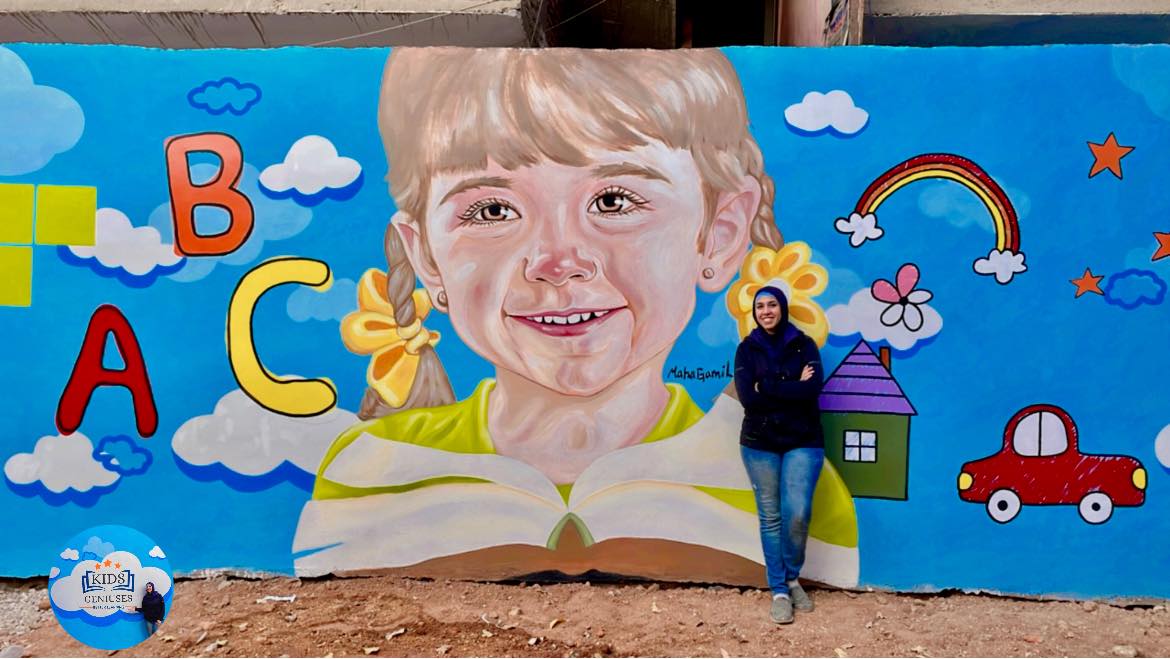
You paint those beautiful artworks, but you mostly do this together with your husband as an artist duo. Tell us a bit more about him.
Yes, we are artists who support each other, and our goal is the same. He helps me and supports me, and he is an artist himself, too. Also he comes from an artistic family, where he has 10 sisters, all of whom are artists. I saw him at the Institute for the Restoration of Antiquities in Luxor, because we first joined this institute before the Faculty of Fine Arts, like an equation after school. We became study buddies, then we became art work buddies, then he became my life partner. Ali, my husband, is an ambitious, intelligent, moral and calm man, with an artistic spirit and a very intelligent mind. He loves people who are distinguished in thought, art and personality, who have a positively influential role in any society.
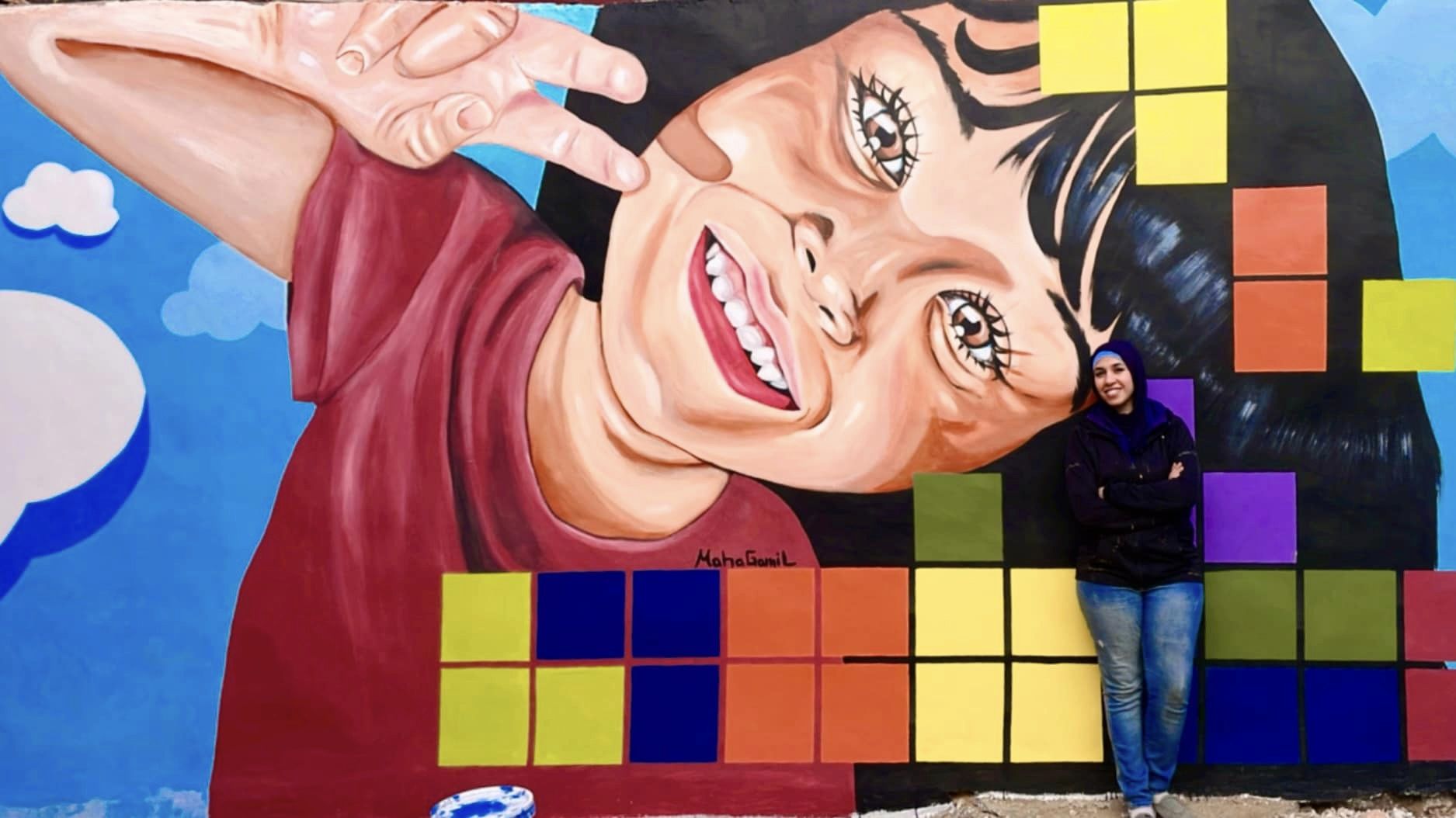
Have you ever had an exhibitions in a gallery or at some kind of art venues?
Yes, I had already more than 50 exhibitions in which I participated in the palaces of culture and special exhibitions in the halls of the old palaces, but that was in the past because I am now more interested in drawing walls and inspiring community stories and different cultures. And I want to make every viewer happy.
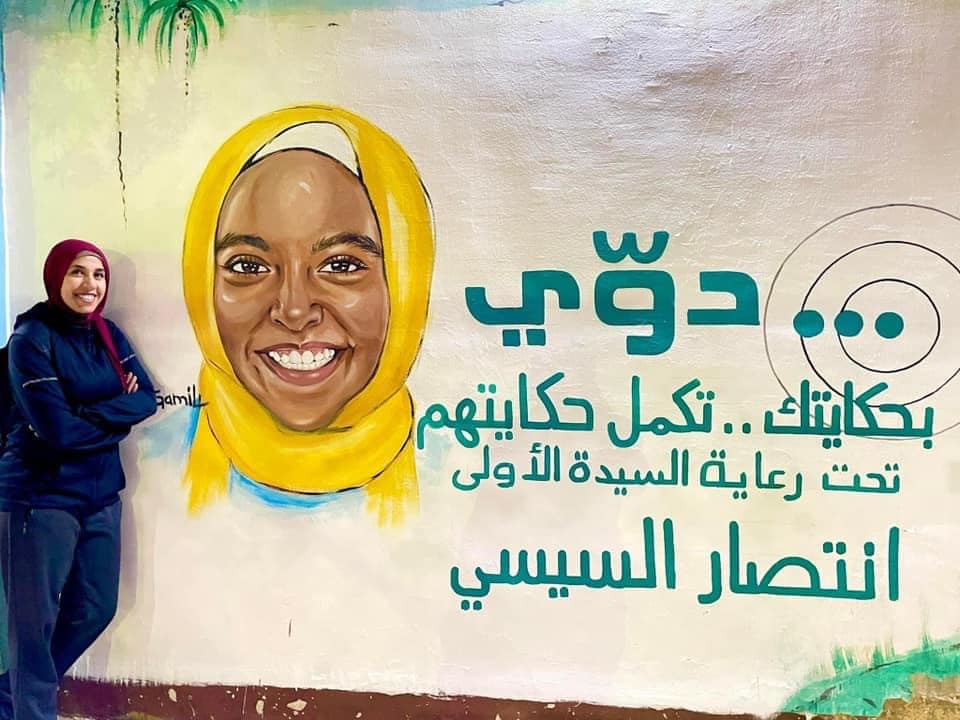
Wow, already 50 exhibitions! Fantastic! Can you tell us a bit more about it? So not about all the exhibitions, but which ones were particularly important to you and which ones did you like the most.
I do not remember all of them very well, but I remember an exhibition that I loved very much in the Sudanese Embassy in downtown Cairo, and also another exhibition in the Palace of Culture in the Garden City area near the Nile, next to Tahrir. And most of my artworks there have been sold. This occured when I was in my third year of studies at the Faculty of Fine Arts.
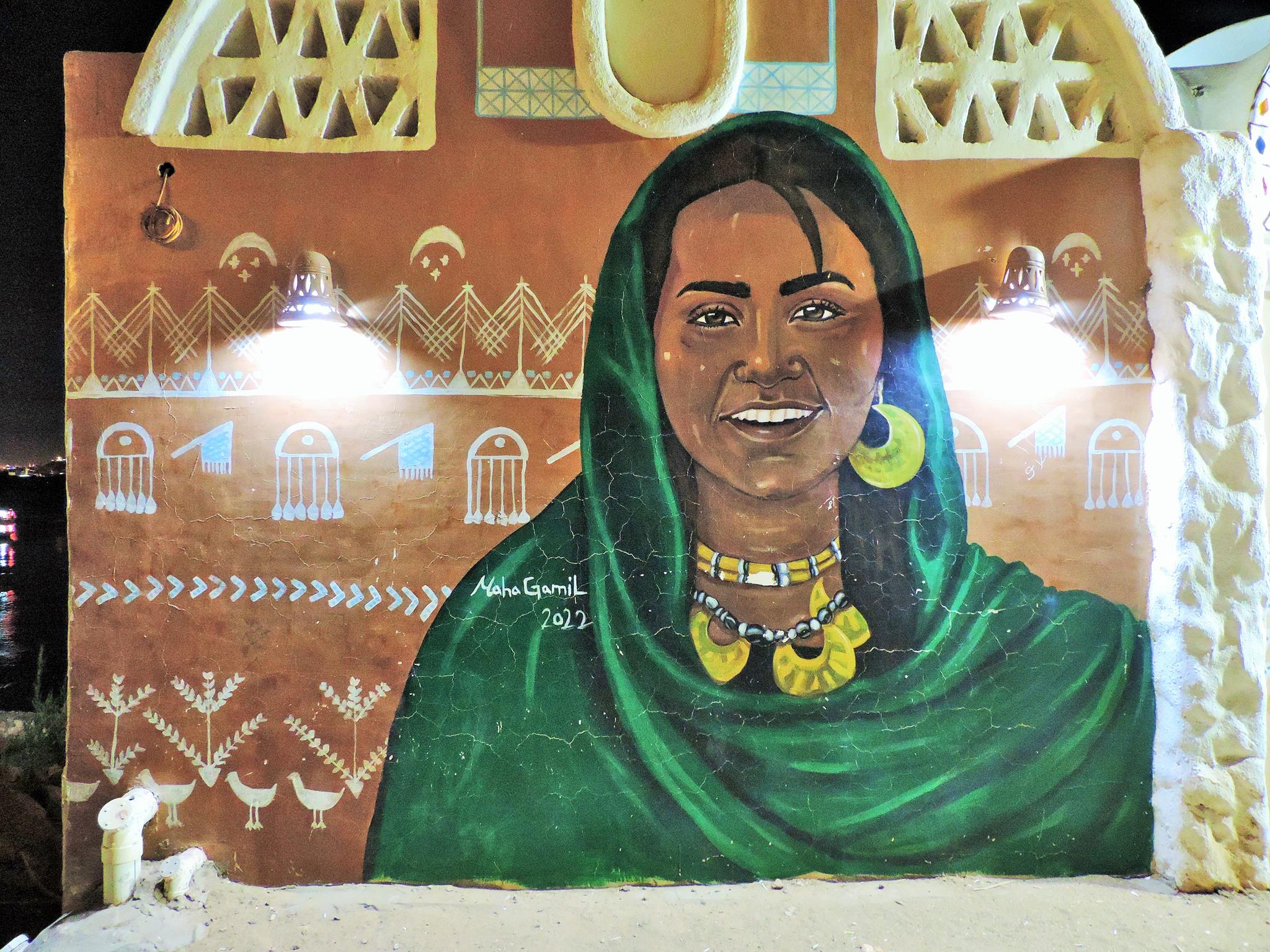
How do others perceive your art? Do the local people like it? We saw really a lot of beautiful painted houses in many places, which we didn’t expect.
Egypt is one of the countries which has been famous for art in the past. I continue to complete this art on the walls, but in a modern style that goes with the modern form. And people interact positively and cheerfully with my art and encourage me for doing more of it.
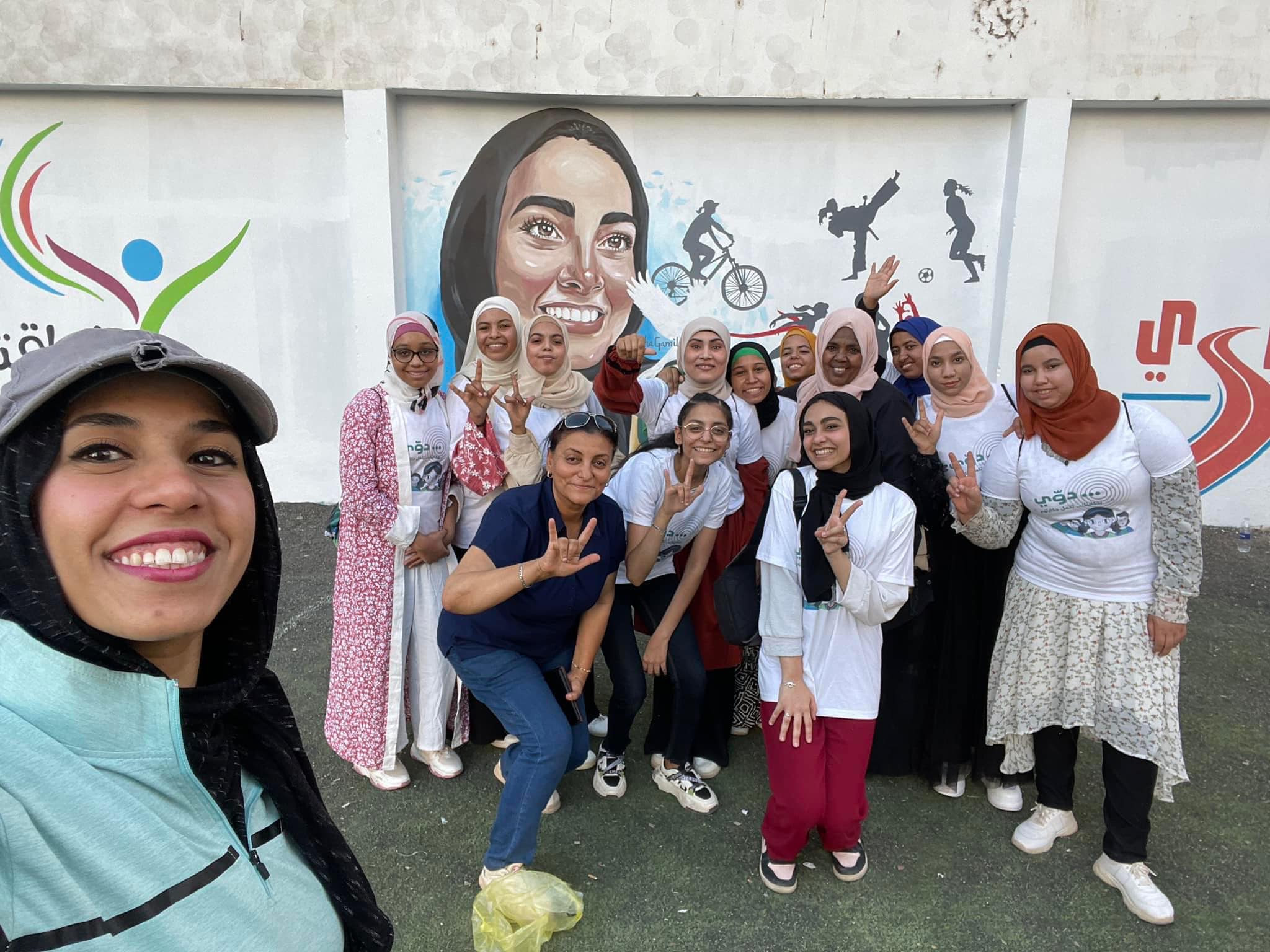
Surely you don’t just paint the houses of the people, you ask them before for permission, right?
Yes, because it is not possible to paint on people’s homes without permission, but people welcome this when I ask them to do so.
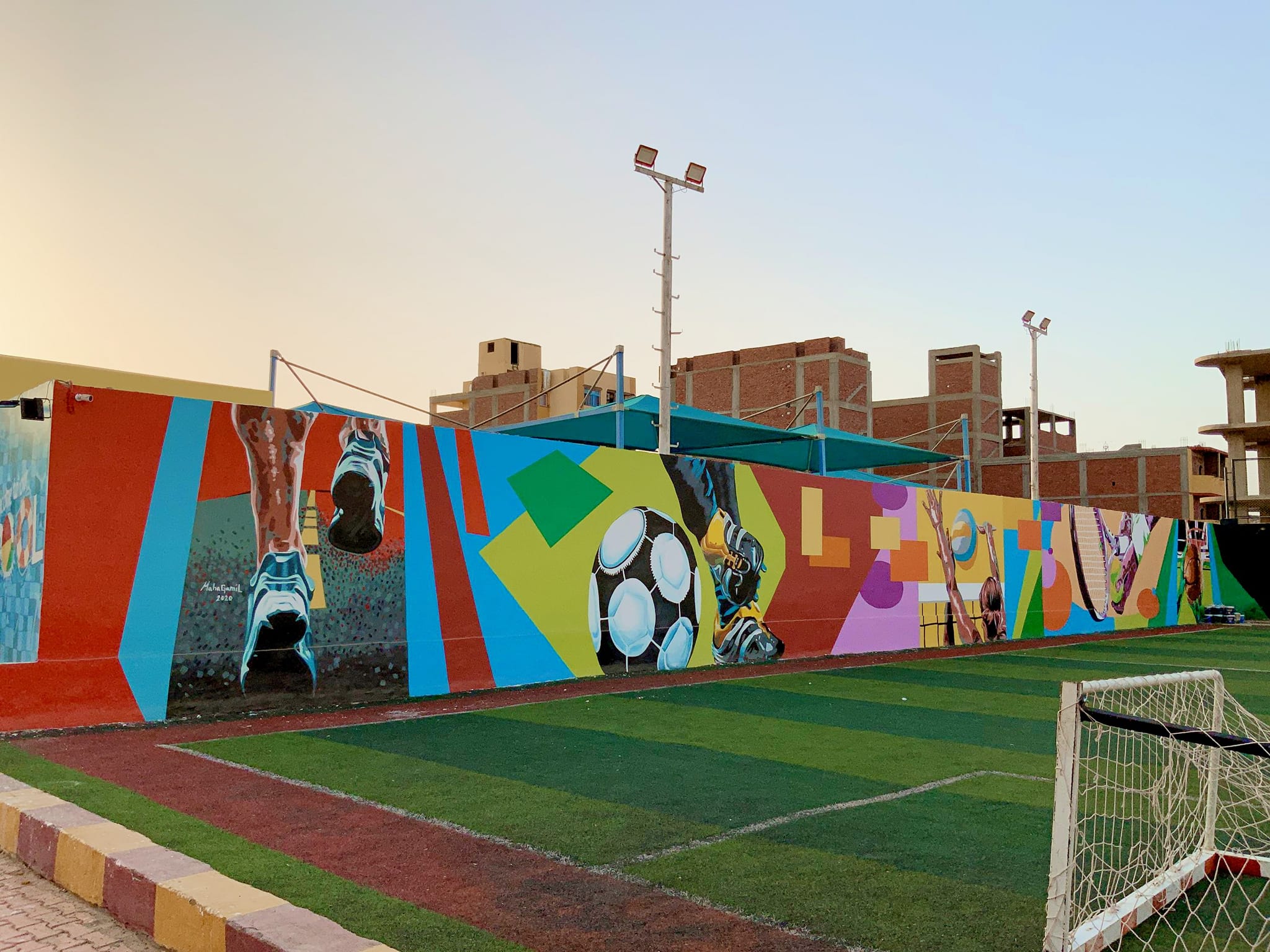
Can you make a living from your art? Can you earn enough money with it in Egypt to be an artist exclusively? What is the situation overall for artists in Egypt?
Yes, I can make a living from my art, but it is not permanent. At the moment I can earn enough money with my work to mainly being an artist in Egypt. The general situation for artists, especially for street artists in Egypt was that there were just a few. And the first ones who started to draw on the walls from around the year 2005, they have been teaching us. And after that the idea of drawing in the streets of our country came to us. After people accepted this art our goal was the joy and happiness of all people. The idea of drawing on the walls has spread again, and they encourage talented people and artists in Egypt. But there is a limited number in each governorate in Egypt of street artists.
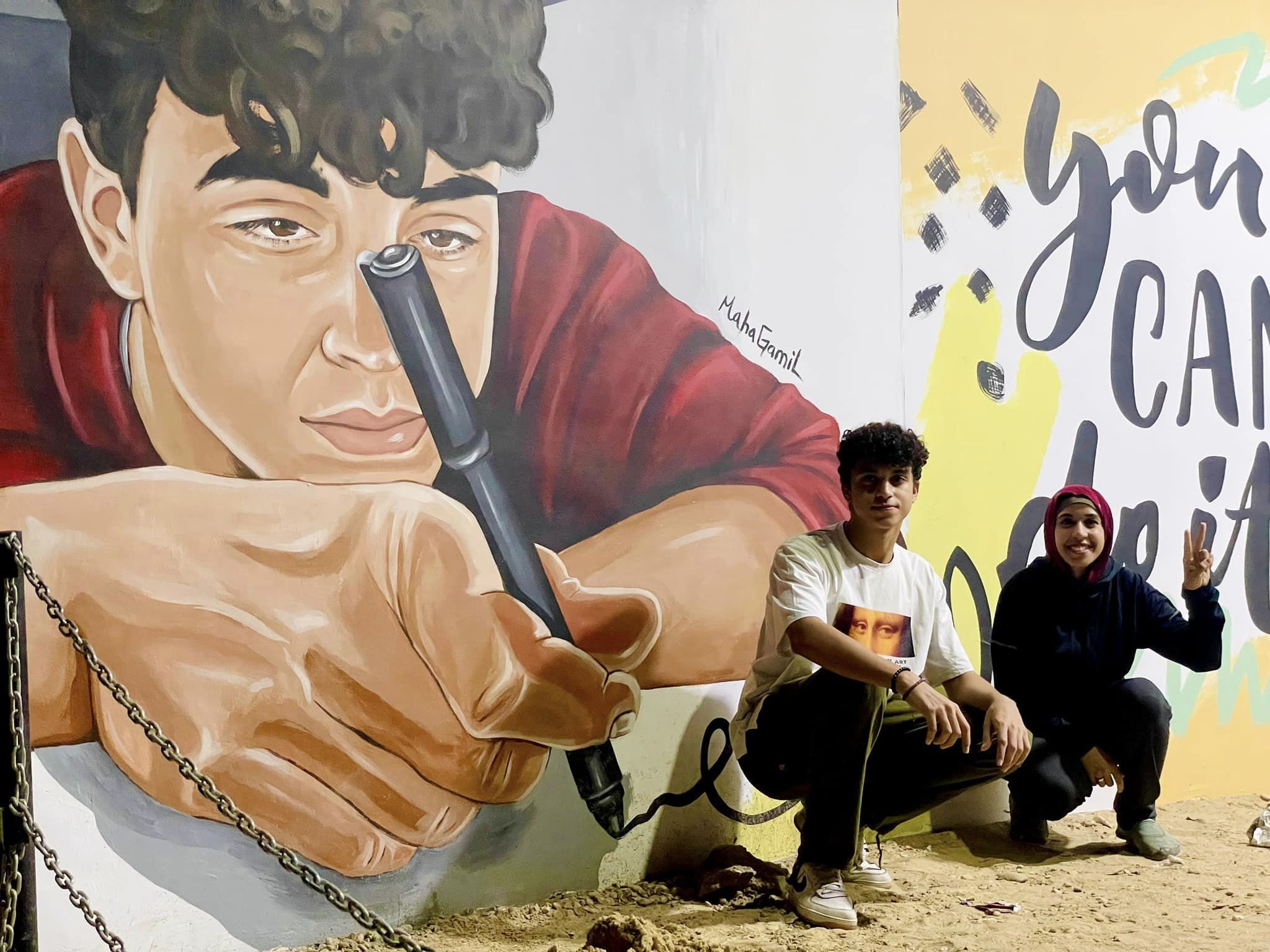
You said that Egypt has a long history of mural painting. Indeed it has and people have been painting or sculpting artwork on walls for thousands of years. Tell us more about this and how you see your country’s artistic history.
They wrote, explained, and chatted to each other and their community with their stories, beliefs, food, and skills such as repelling, spearing, battles, and victory, and their feelings of joy, sadness, and generosity, and their dealings with the guest, and with religion, respecting it, and so on, and I respect this active participation. It is purposeful and distinctive engineering of technical ideas and luxury design.
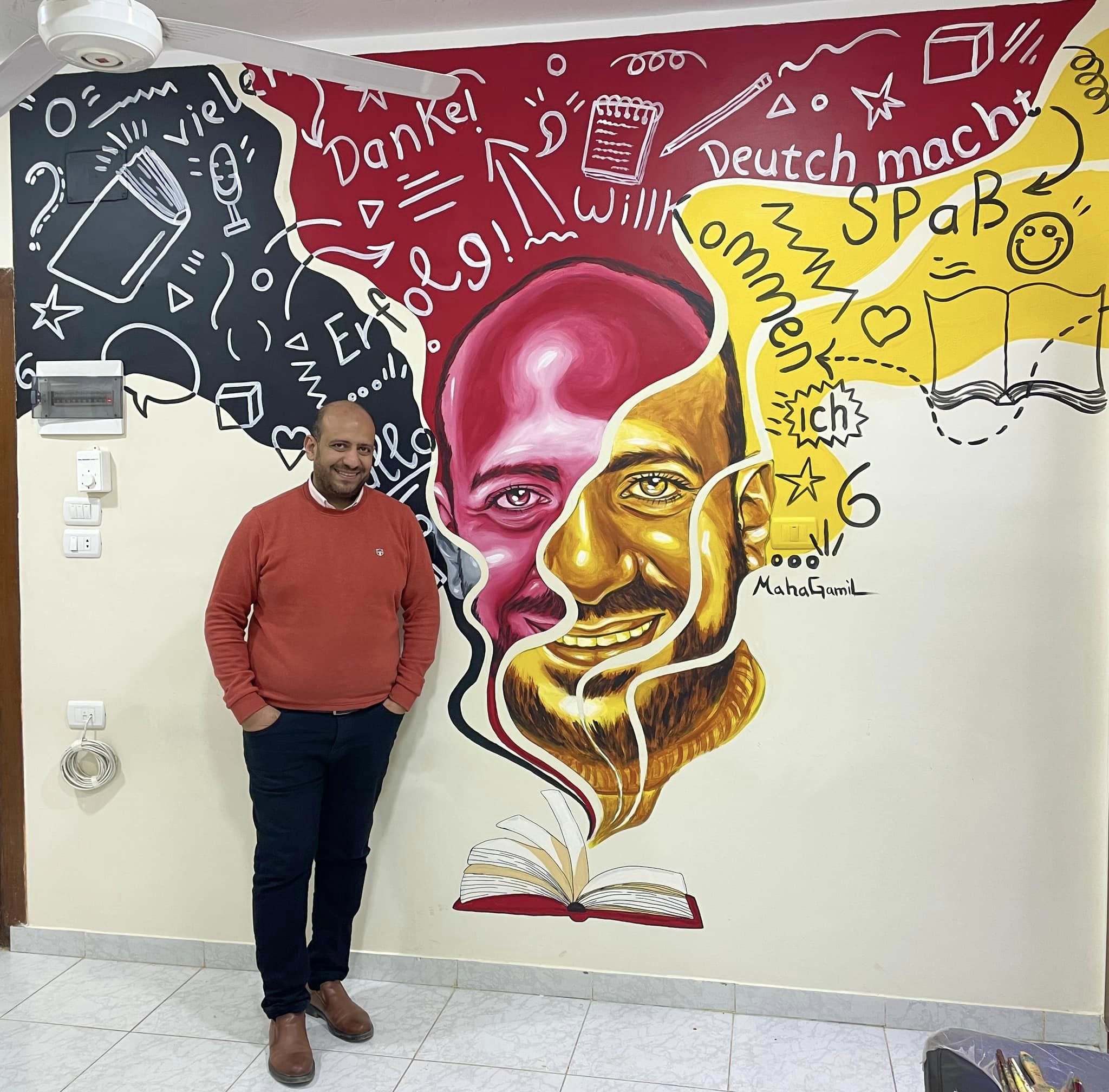
Do you think that art is currently well present in Egypt? So not only ancient art, but also modern art? Is there a scene and a demand for it? Or would you like to see art getting more attention? It’s like this all over the world, the economic and capitalistic factors are always considered more important, the art unfortunately always comes later, it’s like this almost everywhere. How is it with you in Egypt and how do you feel the development in the last years?
Yes, art is well present in Egypt now. I see that modern art is complementary to ancient art, with changing cultures, thought and modernity. Yes, there is watching street art and people feel that it is very important and need it positively and psychologically and I agree with you as economic and capitalist factors are always considered more important, and art always comes later unfortunately, like this almost everywhere. From this point of view, the artist is the one who must impose and explain art in a contemporary way, for people to see and absorb it as a very important culture. And the artist must impose this art as ideas that come from within and his mind, like the writer and the journalist.
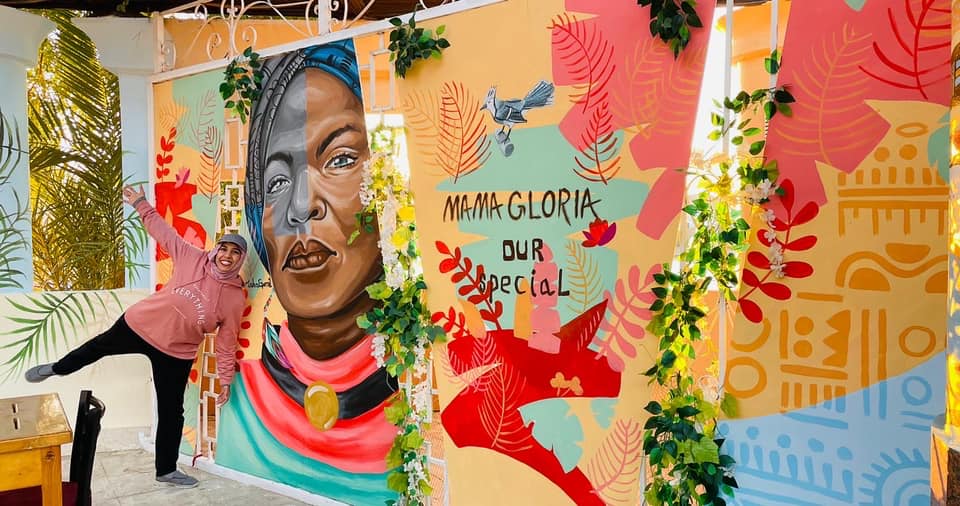
You also run the Maha Gamil Art Studio and as a teacher you teach others art and to be creative. Tell us a little more about it. What is Maha Gamil Art Studio?
No, it is not a studio. I train everyone who wants to develop their talent and teach art and its basis. I encourage everyone who wants to see himself as an important artist for society and himself, and to understand the meaning of art for his country and the world. I give this training in many places
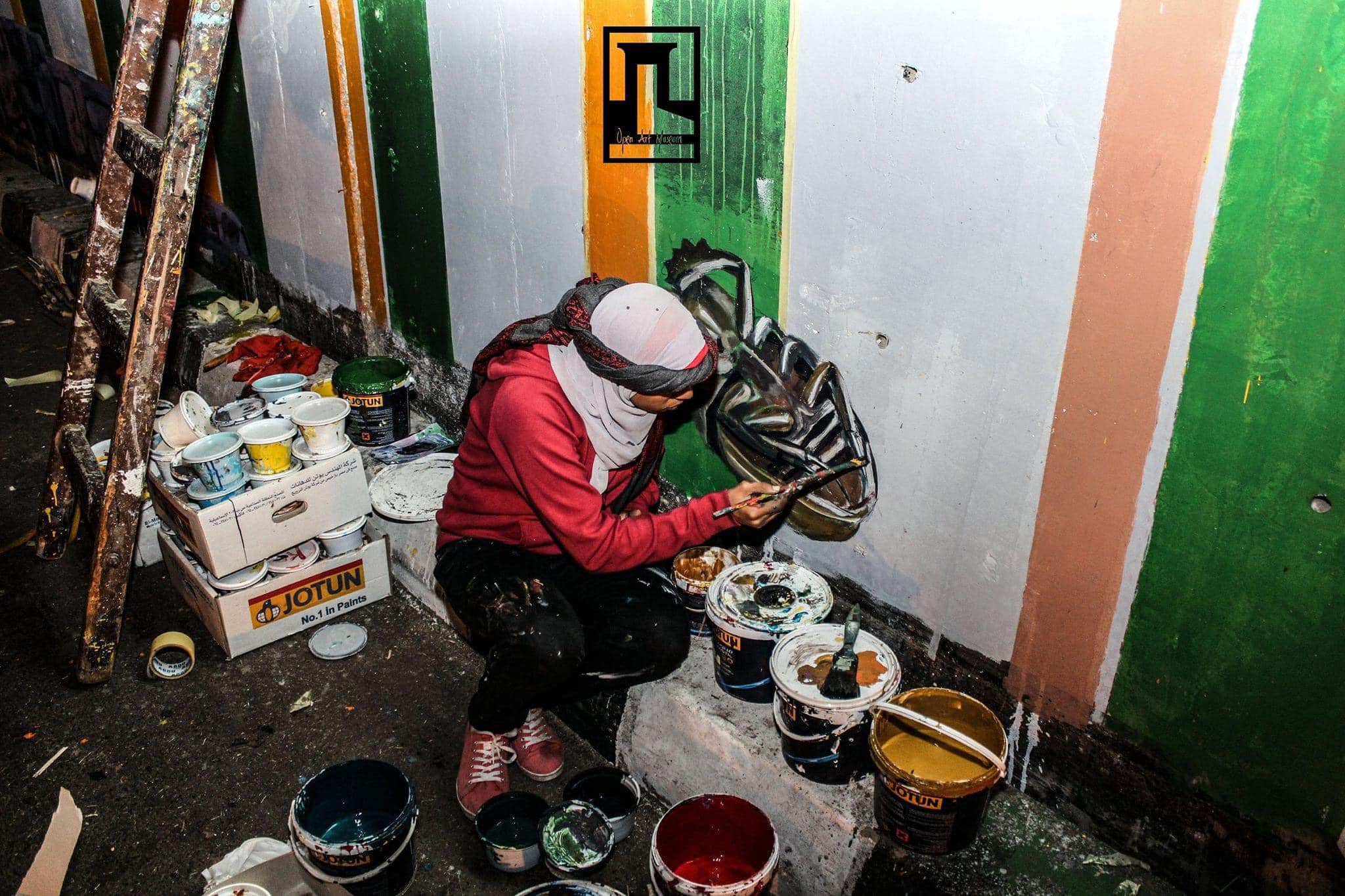
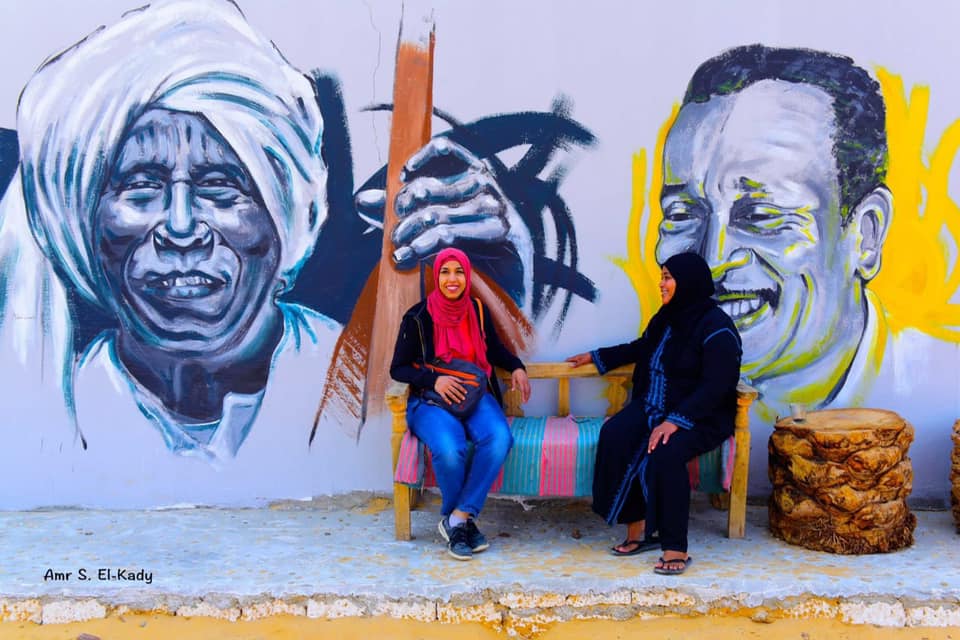
INFOTHEK
![]() Artist: MAHA GAMIL
Artist: MAHA GAMIL
![]() Facebook – Maha Gamil: https://www.facebook.com/memo.friend
Facebook – Maha Gamil: https://www.facebook.com/memo.friend
![]() Facebook – Maha Gamil Art Studio: https://www.facebook.com/profile.php?id=100067689960321
Facebook – Maha Gamil Art Studio: https://www.facebook.com/profile.php?id=100067689960321
![]() Instagram: https://www.instagram.com/mahagamilll
Instagram: https://www.instagram.com/mahagamilll
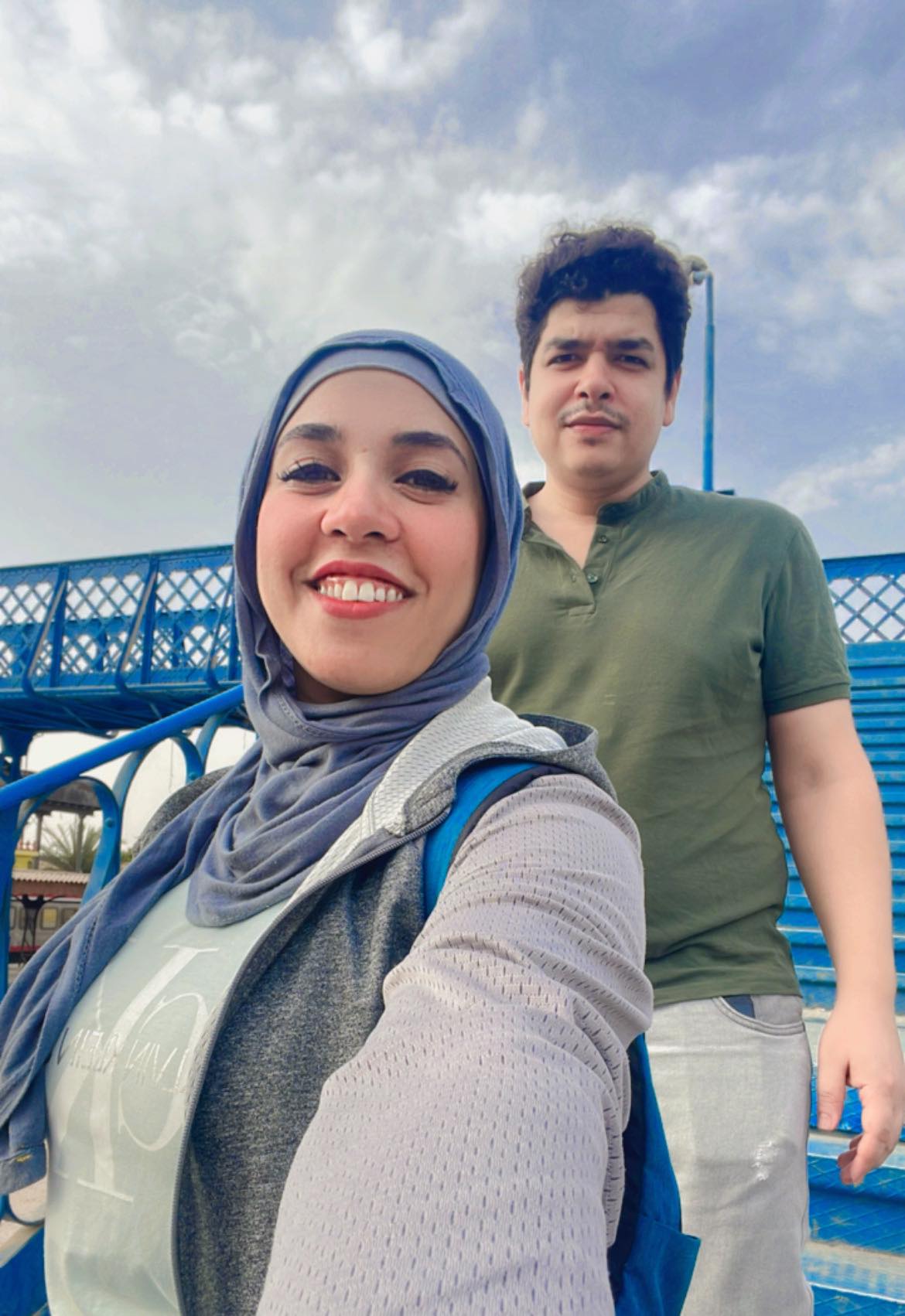
MORE ARTICLES ABOUT EGYPT
>>> Egyptologist Tamer Ibrahim <<<
>>> Streetart Nubian Village <<<
>>> The Great Pyramids – Cheops <<<
>>> The Majestic Sphinx <<<
>>> Red Pyramid of Dahshur <<<
>>> Bent Pyramid of Dahshur <<<
>>> Djoser Step Pyramid <<<
>>> Streetart Aswan <<<
>>> Streetart Giza <<<
>>> Streetart Luxor <<<
>>> Streetart Alabaster Forges <<<
>>> Philae Temple near Aswan <<<
>>> Kom Ombo Temple <<<
>>> Abu Simbel Temple <<<
>>> Aswan – Architecture <<<
>>> Luxor – Architecture <<<
>>> Alexandria – Architecture <<<
